UNIQUE Saibaba INFORMATION
Invisible Saibaba This photograph was taken by a devotee named Gopal Dinakar Joshi in the year 1912. Every morning after breakfast, Baba went to Lendi Baugh. The devotees stayed in Sathe Wada would eagerly wait for Baba and the procession to approach the corner in front of the Wada, so that they could have his darshan. Baba responded to their wishes by standing there for a while.
Joshi wanted to take a photograph of Baba. He kept his camera mounted and ready for Baba to return from Lendi Baugh. Before doing this he asked Baba for permission to take his photograph. Baba said, “I don’t want a photograph of mine, but you can certainly take a photograph of the devotees accompanying me”. Upon Baba’s return from Lendi Baugh, he stood a while near Sathe Wada. Joshi seized the opportunity and took a photograph of Baba. Shama saw this and told Baba that Joshi had taken his photograph. Again Baba repeated the same saying “I don’t need any photograph of mine. What am I to do?”. Joshi got the photograph printed and to his utter surprise, Baba is not visible, and only his feet can be seen. The Umbrella, Bhagoji Shinde and the other devotees are clearly seen but in place of Baba there is a luminous light and only his feet can be seen. (Refer Sai Leela Magazine 4th Year, Ank.4-5 Jeshta and Ashad Shake 1848 (1826)) - (Source: Ambrosia in Shirdi & Baba’s Gurukul by Vinny Chitluri). Saibaba holding Tukaram's Gatha in Hand This is a rare photograph of Baba holding Tukaram's Gatha in his hand. On Guru Poornima day numerous devotees came to Baba and placed a book before him, hoping that he might return it with his blessings. So they could study it and benefit from it. Saibaba however took a book from one devotee and gave it to another. This photo is from the First Edition of the Marathi Sai Satcharitra. The text says Baba with Tukaram’s Gatha in Hand. - (Source: Ambrosia in Shirdi by Vinny Chitluri).
Saibaba’s with consent Photograph Vasudev Sadashiv Joshi of Sitharam & Company and his friend Chidambar Rao K. Gadre were devoted to Baba. They went to Shirdi every now and then. Once Joshi gave Rs.10/- to his friend and asked him to give it to Baba as Dakshina. He also made another request and that was to take a photograph of Baba and bring it back to him. Gadre left with Rs.10/- and went to Dwarakamai, prostrated before Baba and gave him Joshi’s Dakshina. He was silent, as he did not have the courage to request permission for the photograph. Baba too was silent for a long time. Then just before his departure Baba himself asked Gadre to take his photograph. Baba told him that the photographs should not be sold for a profit. He then gave him Udi and Prasad. - (Source: Ambrosia in Shirdi by Vinny Chitluri).
Saibaba’s Original Photograph of going to Lendi Garden Baba would daily go to Lendi in the morning between 8.30 and 9.30. Baba used to normally walk barefoot when he went to Lendi as He intended to sanctify the soil of Shirdi with his Charan Sparsh. He would first come out of the mosque and stand leaning on the wall a while. After that he would stand opposite the Maruti temple to the monkey God Hanuman, and gazing fiercely at the temple would move his hands about making some kind of signals. He would then stand at the crossroads at Gurusthan as if talking to someone, and then proceed further. The devotees who were staying at the wada and those who had recently arrived would have the darshan of Baba there. They would all be standing in lines, eagerly awaiting Baba's arrival from the mosque. Baba would slowly move down the lines, lovingly greeting each devotee by name, and smiling his benediction at them.
He would then turn left and proceed towards the house of Balaji Pilaji Gurav’s House. There Baba used to lean on the wall of Balaji Pilaji Gurav’s house. On one such occasion when Baba was leaning on the wall of Balaji Pilaji Gurav’s house, this rare black and white photograph of Shri Saibaba was taken. This photograph was taken by Shri.Kashinath Gode, a photographer from Pune in the year 1916. Sai devotees can view the video wherein Great Grandson of Nana Saheb Nimonkar, Shri.Nandakumar Revannath Deshpande Nimonkar and Historian Dr.Vinny Chitluri have narrated in detail about the rate photograph taken in 1916.
Video Courtesy: Shri.Nikhil Kripalani, Saibaba Devotee Speaks
Photo Courtesy: Shri.Nikhil Kripalani, Saibaba Devotee Speaks In this rare picture above, we can see Nana Saheb Nimonkar (Shankar Rao Raghunath Deshpande) on the right side of Baba, Gopalrao Mukundrao Butti is standing on the left side of Baba. In this photograph, Butti is looking downwards. This is because, Butti never looked at Baba's face.He preferred to bow down to HIM and look downwards indicating his respect to Saibaba (Guru). Bagoji Shinde used to hold the Umbrella above Baba’s head and Chopadhar Bala Kashiram Shimpi used to lead Baba from the front. The small boy standing next to Nana Saheb Nimokar is Gopal Somanath Deshpande Nimonkar - the Grandson of Nanashaeb and Son of Somanath Deshpande Nimonkar. If we closely observe this picture Baba is standing like lord Krishna (on one foot) we can also see that a thread is coming out of the Kafni that Baba is wearing.
Afterwards leaning on the wall of Balaji Pilaji Gurav’s house for sometime, Baba would cross in front of the Vitthal temple and turn right towards the Kanifnath temple (located opposite the post office). He would walk a little further and turning another right would enter the Lendi. He used Lendi to complete his daily toilet. Baba also used to bathe in Lendi Garden.
Baba used to again go between 2:30 pm to 3:00 pm in the afternoon to Lendi garden and return to Dwarakamai. (Source: Vinny Chitluri). Saibaba sitting with Outstretched Legs This is an original photograph of Saibaba. In this photograph, Baba is sitting with His legs outstretched. Mhalsapati is on His left and Shama is on His right. The name of the Muslim lad who rests his head in Baba’s lap is Bhika who was born in Shirdi. He was the son of a Musalman. Bhika died many years ago (Source: Vinny Chitluri and Shirdi Saibaba - The Saviour Book by Dr.Rabindranath Kakarya)
Saibaba Going for Bhiksha This original photograph of Saibaba shows Baba going for Bhiksha. The villagers would often bring their wares and set up temporary shops. Baba is in the vacant space near the Chavadi between Vamanrao Gondkar’s and Sakharam Shelke’s home. He has the Tumrel in his hand and a cloth over his head. The five blessed biksha houses are: 1. Sakharam Shelke 2. Vamanrao Gondkar 3. Bhayaji Appa Kote Patil 4. Tatya Kote Patil and his mother the blessed Bayaja Mai Ganpat Kote Patil and 5. Nandram Marvadi i.e., . Nandram Sanklecha. Baba walked bare foot and sanctified the soil of Shirdi, while taking “Madhukari”. The significance of Baba taking Bhiksha: When a human being is born he has certain Runa or debts. They are as follows 1.Pitru Runa (i.e. feeding and remembering our ancestors with love and respect). Baba taught us the 4 Maha Yagna’s by example. Pitru yagna is conducted by the right (entitlement) of a human being. Dev yagna is his swaha right i.e. by saying swaha and putting offerings into the Agni, this is Deva yagna. By slaughter of an animal the Bhoot yagna is accomplished. By offering food to athithi’s and doing annadaan manush yagna is done. Baba took bhiksha every day, thus performing bhoot and manush yagna, for our welfare. He often asked the devotees who came to Shirdi to take the jholi and go for bhiksha. By taking bhiksha from Nandram a Jain Marwadi he taught equality of vision, that caste or creed mattered little. Thus, we should treat food as Bhraman and not hanker after tasty food or delicious food. Life may shower bitterness or sweetness. We should accept it with good grace as prasad given by Baba Why did Baba do ‘Apradikahina’ on His bhiksha route? During shraddha karma (apara karma) the procedure followed is apasavya (i.e, anti-clockwise). He is receiving bhiksha and offering it to our ancestors, which we are supposed to do with every meal. This is ‘aposana or Yama karma’. We are also required to perform yearly shraddha, which we forget to do after some years. Baba took bhiksha from 5 houses instead of 7 houses as is followed in the madhukari of Datta Parampara. The 5 houses symbolize the 5 Pranas. Which are 1. Prana - the vital forces that receive the food into the body 2. Aapana - excretes what is not required. 3. Samana - receives all that is brought by Pranas and assimilates it. 4. Vyana - is the circulatory system that carries assimilated food to the different parts of the body. 5. Udaana - protects and serves as a body-guard to the individuality and the ego helping it to lift the thoughts to a new height of better understanding (Source:Vinny Chitluri)
Apradakshina Biksha Details of Baba: Saibaba used to go to Sakaharam Patil Shelke's House (situated near Baba's Chavadi with a west facing entrance), Vaman Rao Gondkar's House (Oppoisite to Sakharam Patil Sheke's House), Bayyaji Appa Kote Pati'l's House (known as "Sai Kutir" and situated at the end of Kote Galli), Bayaja Bai's House (situated adjacent to Sai Kutir) and Nandaram Marwari Sanklecha's House (diagonally opposite to Dwarakamai Masjid). A questioin might arise in Sai Devotee mind as to why Saibaba took Bhiksha from these five houses. The other probable reason are as follows: The word “Bhiksha” comes from the Sanskrit root “Bhik” which means to beg for. The tradition in India is that the mendicants have to lead a reclusive life devoid of all the pleasures, should subsist on food obtained by begging alms from the householders and should not be choosy about what is to be partaken and eat whatever one gets in the process. Also in such an act, one looses the egoism of the self (Source: Article by Dr.P.V.Shivacharan). According to Datta Sampradaya, the following assurance given by Shri Guru Narasimha Saraswati (Lord Datta) to the people of Ganagapur in Shri Guru Charitra i.e., “Vasathi Rani Sangamase Jate Nithya Bikshese Taya Vare Gangapurase Madyana Kala Pareyasa “ In these Marathi Words Shri Datta Guru has given an Assurance to all his Devotees that he would forever continue to accept alms at Sri Kshetra Ganagapur in the Afternoon Time. As it is believed that Datta Maharaj himself takes the bhiksha here at afternoon , each and everyone Visiting Ganagapur must offer Madhukari (Bhiksha/alms) to Some people atleast and also accept bhiksha from 5 houses as the Prasadam (Ref:Shri Guru Charitra). According to Buddhism, Bhagawan Buddha suggested that the basic source of food for Bhikkus or Bhikshus was that received on the morning alms round. This daily dependence on alms food reminds both the bhikkhus and the lay devotees of their interdependence and prevents the bhikkhu from becoming too isolated from the lay community. He meets' them every day and eats the food that they share with him. An alms round is not considered begging, for the bhikkhu does not solicit anything but is ready mindfully to receive any alms that lay people may wish to give. Although alms food may sometimes be meager, the bhikkhu is always expected to be grateful for whatever he is given (ref:www.accesstoinsight.org). Likewise, Saibaba who is the 4th incarnation of Lord Dattreya Himself also followed the tenets of Datta Sampradaya and Buddha Traditions and used to take Bhiksha from five blessed houses till His Mahasamadhi Day. He not only did that Himself but also also encouraged His devotees to take Bhiksha from houses in Shirdi. Saibaba directed Sai Mahabhakta Professor G.G.Narke who came to have His darshan with full fledged Suit and Boot to go and have food in Mahalsapathy's House. By directing Professor G.G.Narke like this, Saibaba very clearly showed that He wanted His devotees to be devoid of Ego and also to be humble. It is also believed that by taking Bhiksha, Saibaba used to take away the Sanchita and Prarabdha karma of His devotees. Saibaba sitting in front of Dhuni Maa The below photograph is the original photograph of Saibaba sitting in front of Dhuni Maa taken during Baba's period. This photo is one of the earliest Photo of Baba sitting in front of Dhuni Mai with His right hand next to His ear. It is of young Saibaba. This photograph was taken in 1903 by a Photographer named Shri.Kashinath Gode from Pune. He still the glass slide of it. The first print of this photo is in Sai Mahabhakta Late Dammu Anna Rasne's shop in Ahmednager. A copy of this photograph is in the Museum upstairs.
The colour painting of this photograph was done by some devotee from Mumbai and this painting is taken in procession to the Dwaraka Mai where there is Akhand Parayan during the major festivals in Shirdi. This photograph is taken on the first day of festival from Samadhi Mandir to the Dwaraka Mai and kept there. After the Akhanda Sai Satcharitra Parayan gets over, the photograph is brought back from the Dwaraka Mai to Samadhi Mandir in procession and kept in the small glass museum inside Sanctum Sanctorum of Samadhi Mandir. Sai Devotees who visit Shirdi, can see this photograph kept inside a small glass museum on the left side of Sanctum Sanctorum of Samadhi Mandir.
This pose possibly represents the “inward journey” that we have to take to reach “Baba”, and be one with him. This journey started with the first step of withdrawing our Karmendriyaas totally from this mundane life. This is represented by the left leg which is not seen. Control the Jnanendriyaas, which are to act over the Karmendriyaas which is represented by the right leg over the left leg. This is achieved by following the messages heard or insight derived from this inward journey. This is represented by the closed fist of the right hand which is kept next to the ear. An invisible Antakarna Chatushtaya with adhimanas as support is represented by the right hand kept next to the right ear. The left hand over the right leg represents surrendering to him in totality. We have to surrender all of the following, the three Shariras, the trigunas, the arishadvargas, the 5 pranas, and the 5 koshas. This is achieved by following the Jnana Marga, Bhakti Marga, Karma Marga or the blend of these three Margas (Source:Vinny Chitluri). Baba sitting on the Ota in the Sabhamandap at Dwarakamai This rare photograph shows Baba sitting on the ota with Abdul Baba, is seated on the first step of the central stairs of the Dwarakamai. Tatya Kote Patil is sitting on the third step with a book in his hand, as identified by his descendants. Nanavali is next to him seated on the third step of the southern Staircase. (Source: Vinny Chitluri).
Nanavalli, Tatya Kote Patil, Abdul Baba and Saibaba Saibaba standing next to the wall of Dwarakamai This is a very unusual photograph of Baba, who is standing next to the wall of the Dwaraka Mai with his right arm bent and resting against the wall. The Kafni that Baba has worn is made out of white satin. The Kafni is possibly pasted on the photograph. (Source:Vinny Chitluri)
Original photograph of Baba with devotees This is a very rare original photograph of Shri Saibaba. This photograph of Baba sitting on the stone was taken in 1903. It was taken by Shri.Pupal, the owner of M/s.Pupal Photo Studio of Ahmednagar. And the photo is with them. He had learned photography from the British and because he had a Photo studio he came and clicked Baba's Photograph. (Source: Vinny Chitluri)
Original photograph of Baba giving Udi to devotees This is a rare original photograph of Shri Saibaba distributing Udi to devotees in Dwarakamai.
Portrait of Baba in Anandrao Pakadhe's Home This is the original painting of Baba that was hung in Anandrao Pakhade’s home. Anandrao used to offer his prayers to this photograph. This photograph was with him since Baba’s sojourn in Shirdi. But one does not know whether Baba himself gave this photograph to him. (Source: Baba’s Rinanubandh by Vinny Chitluri).
The below photoghraph was in the house of Sai Mahabhakta Shri.B.V.Deo and was worshipped by him. (Source: Baba's Rinanubandh by Vinny Chitluri).
Baba's Photograph in Purandare's Home: Baba himself gave this Photograph to Purandhare who venerated it and prayed to it daily. Often at times when he was in trouble he would sit in front of this photograph and cry his heart out and Baba would appear immediately and comfort him. (Source: Baba’s Rinanubandh by Vinny Chitluri)
The below photoghraph of Saibaba was in the house of Sai Mahabhakte Lakshmi Bai Shinde and was worshipped by her. (Source: Baba's Rinanubandh by Vinny Chitluri).
The below photoghraph of Saibaba was in the house of Sai Mahabhakta Govinda Raghunath Dabholkar alias Hemadpant and was worshipped by him. (Source: Baba's Rinanubandh by Vinny Chitluri).
The below painted portrait was sent by Baba Himself to Sadhu Bhaiyya Naik on 8th February 1915(Source: Baba's Rinanubandh by Vinny Chitluri).
The below photograph is in Vishnu Pant Pitale's Home. Baba hugged this photograph before giving it Vishnu Pant Pitale. (Source: Baba's Rinanubandh by Vinny Chitluri).
The below photograph of Saibaba belongs to Balaram Mankar's family. (Source:Baba's Rinanubandh by Vinny Chitluri).
The below photograph is the original photograph of Saibaba belonging to Nulkar's family. (Source:Baba's Rinanubandh by Vinny Chitluri).
The below photograph is the original photograph of Saibaba which was used by Late Shri.B.V.Talim to sculpt the idol of Saibaba for installing in Samadhi Mandir in Shirdi. (Source:Baba's Rinanubandh by Vinny Chitluri).
The below photograph was taken by D.D.Neroy. The painting in the Dwarakamai was also done by him and was based on this photograph.
The below photograph is the Bass Relief Replica of Baba at Bhivpuri Saibaba Mandir. This is the first ever Saibaba Mandir in the world built during Saibaba's sojourn itself. (Source: Baba's Vaani by Vinny Chitluri).
The below photograph is the original photograph given by Saibaba to Jyotindra Tharkhad. (Source: Baba's Vaani by Vinny Chitluri).
The below small photograph was given by Saibaba to Savitri Bai Tendulkar and is still with her descendants. It has a lot of sentimental value, so much so that the family will not even wipe it, as they do not want to wipe off Baba’s touch! (Source: Vinny Chitluri)
Baba's Photo in Tendulkar's House The below photograph is in Govind Raghunath Dabholkar alias Hemadpant's house. According to reliable information, the photo was given by the descendants of Moreshwar Pradhan to Govind Raghunath Dabholkar (Source:Vinny Chitluri)
Baba's Photo in Hemadpant's House Original Paintings of Shri Saibaba Below profile painting is of Baba going for Bhiksha. He has a Jholi slung from His shoulder. This painting was originally in Mahalsapathi's house.
The below photograph is not a photo but a painting done by Shri.Shamarao Jayker. One day Shri.Ramachandra Atmaram Tarkhad and Jayakar walked into the Dwarakamai when Baba was getting ready to have his bath, and the suns rays were streaming down upon him and his entire body was illuminated. It looked as though the lustre of a thousand Suns were shining on him. Immediately Tarkhad asked Jayakar to capture the scene in his mind's eye and paint a portrait for him exactly like that and he did. This portrait is in Virendra Tarkhad's i.e Jyotindra Tarkhad's sons home in Santa Cruz Mumbai. There is a 'Gangal' filled with water in front with a lota. Baba has taken off his Shirvesh and is bear headed.(Looking at his thick abundant beard and mustache I would have thought that he had thick lush hair but it looks scanty). This clearly depicts the divinity of Saibaba and confirms Him to be a Parabrahma. (Source:Vinny Chitluri)
The below portrait was painted around 1917, when Jayakar came to Shirdi. He asked Baba for permission to paint the Dwarakamai pose and also painted this portrait of Baba's Chavadi procession (Ref:Shri Sai Sagar Magazine, Jan-March 2011).
In the above color painting, you can see Nana Saheb Nimonkar on the right side, Das Ganu behind Nimonkar,Behind Das Ganu is Baala Shimpi, Buti on the left side of Baba, Moreshwar Pradhan holding the garland, Moreshwar Pradhan's son "Chota Sainath" also known as Bapu holding the pooja materials in the thali, Shamrao Jaykar's son holding the Rajat Danda (silver staff), Kaka Saheb Dixit behind Saibaba on the right hand side, Bhagoji Shinde holding the Umbrella, Balaram Mankar in between Buti and Moreshwar Pradhan and Lakshmi Bai Shinde behind Bhagoji Shinde. (Source:Vinny Chitluri). The below photograph is another rare photograph of Shri Saibaba. The photograph is a close up photograph of Baba sitting on stone (inside Dwarakamai Masjid).
Original Pictures of Places in Shirdi There was a famous photo studio in Pune called Welling photo studio. Shri.G.G.Beliga the photographer belonging to that studio had taken the below original picture of Nanda Deep around the year 1930. This photograph was later published by Late Shri.B.V.Narasimha Swamiji in his series of Books called The Life of Saibaba. (Source:Vinny Chitluri)
The below photograph is the one of the oldest photographs of Lendi Baugh.
The below photographs are very old photographs of Lendi Baugh showing the Banyan Tree and Nandadeep.
The below photograph is a very old and rare photograph of Dwarakamai Arch.
The below photograph is a very old photograph of Dwarakamai.
The below photogragph is the original photograph of the Nimbar present inside Dwarakamai Masjid.
The below photograph is the original photograph of Dhuni Maa taken around the year 1936 by Late Shri.D.D.Neroy from Pune. (Source: Charters & Sayings by Shri.B.V.Narasimha Swamiji).
The photographs below are the original photographs of Shri Saibaba Samadhi Mandir, Shirdi.
The below photograph is a rare original photograph of Samadhi Mandir. This photograph was taken during some festival. Devotees carry holy water from Godavari River for Baba's Mangal Snaan. In the below photograph one can see Kavadi (2 pots filled with the holy water is slung on to a wooden carrier which in turn is carried to the Samadhi Mandir on a shoulder. This holy water is used for Baba's Mangal Snaan.
The below photograph is a original photograph of Samadhi Mandir.In the photograph one can see that the devotees are performing "SAI SATYANARAYANA VRAT" but the Murti (Idol) of Shri Saibaba is not seen in the picture. Hence, this photograph must have been taken before 1954.
The below photograph is taken from the book titled "Shirdi In Pictures" published by Shri Saibaba Sansthan Trust (Shirdi) long back. By looking at Sathe Wada, the Garden and the Cars Parked in front of the Samadhi Mandir, it looks like this picture must have been taken during 1960's (Source: Vinny Chitluri, Shirdi).
Samadhi Mandir Outerview around 1960 (Photo Courtesy:Shri.Nagaraj Anvekar) Rare Group photo of Sai Mahabhakthas on the occasion of Shri Saibaba's 25th Punyatithi in the year 1943 (Photo & Info Courtesy: Shri.Jignesh Rajput, Surat) Devotees sitting on the chair from your left : Devotees sitting down from your left :
Fake Photographs displayed in Web Media and Social Networks as original Photographs of Shri Saibaba and Shirdi - Courtesy:Vinny Chitluri Baba rarely gave His consent for His photographs to be taken. However a few photographs were indeed taken. Most of these photographs were taken after 1900 and at that time Baba was not young. The below photograph was first published in 1930 in a Magazine called “Manoranjan” and Shri.Shripad Keshev Naik had written that this was “Shri Samarth Shirdi Che Saibaba”. However this photograph is of SHRI ADVETANAND SARASVATI BAAL BRAMACHARI SWAMI MAHARAJ of Sarvabhauma Datta Sansthan, Vitthal Chaitanya Vishranthi Mutt, Ganagapur, Gulbarga District of Karnataka State. This Swami took Samadhi in Bhadrapad Ved Panchami in Shake 1830 that is 1908 of the English Calander. This information was provided by a person whose father was a disciple of this Swami and he had the photograph of the Swami from his father. (Source: Sai Anantha. Jully 2009, year 4, Ank 14)
The photograph displayed below is not the Original Photograph of Shri Saibaba but of Sai Mahabhakta Abdul Baba who looked almost similar to Shri Saibaba.
The photograph displayed below is not the Original Photograph of Shri Saibaba but of Sai Mahabhakta Kamu Baba.
The photograph displayed below is not the Original Photograph of Shri Saibaba. The reasons that can be attributed are as follows: 1. His Sirvesh (head gear) is loose and hanging and not tied in a knot on His left side as he always does. Even in His biksha pose His sirvesh (head gear) is tied in a knot on His left side. In the below photograph, the Sirvesh is seen below the cloth on his head. 2.It does not look like he is wearing a Kafni which is V necked and torn at the upper arm, it looks more like a shawl. And there is a white curtain like cloth at his back (right side). What is that? and another sheet behind him on his left.
The below photograph is not a original photograph of Saibaba. Instead the photograph is taken from a Movie.
The below photograph showing Saibaba with a Parrot supposed to have been taken in the year 1906 is not the original photograph of Saibaba.
The below photograph is not the original photograph but a morphed photograph of Dwarakamai Masjid circulated as orignal photograph.
The below photographs are being circulated in many Web Media and Social Networks as the final Samadhi Procession of Shri Saibaba on 16th October 1918. But, we would like to clarify that these photographs are not the final Samadhi Procession photographs of Shri Saibaba. Hence, www.saiamrithadhara.com team urges all Sai Devotees to exercise prudence and not to circulate these photographs as original photograph in Web Media and Social Networks and be part of the mis-leading Sai Groups but instead like a true devotee focus on the Life and Teachings of Shri Saibaba.
The below re-created photograph using the latest technology is being circulated in many Web Media and Social Networks wrongly stating and misleading Sai devotees that Baba had appeared in front of His Samadhi at the Samadhi Mandir in Shirdi. We would like to inform Sai devotees that it is far from truth and urge them not to get carried away by seeing such photographs and also request them to cross verify before putting the posts in Web Media and Social Networks.
The below photograph is being circulated in various Social Media Networks claiming to be Original Photograph of Shri Saibaba of Shirdi. Sai Devotees can easily conclude that this is not at all original photograph of Shri Saibaba based on the following points: 1. Shri Saibaba never used to apply such big Chandan on his forehead like it is being dipicted in this photograph. 2. Shri Saibaba never used to cover Chaddar/ Bedsheets which is shown in this photograph. 3. Shri Saibaba never used Kamandala (holy vessel to carry water used by Gurus and Saints) as shown in this photograph. 4. Shri Saibaba's Eyes were believed to be very powerful and vibrant which we cannot see in this photograph (Photograph and Article Courtesy: Shri.Nagaraj Anvekar, Bangalore).
The below photograph is being circulated in various Social Media Networks claiming to be Original Photograph of Shri Saibaba of Shirdi wearing Long Kafni. Saibaba never used to wear Long Kafnis as shown in the Picture below. Instead, He used to wear Short Kafnis that used to touch just below His Knees. Baba's feet were clearly seen and not like as shown in the picture below wherein the entire feet is being covered. The Sleeves of the Kafni are very long where as Baba used to wear Kafnis that had Semi Full Arm Sleeves. Baba sported a well built body and not like shown in the below photograph. Hence, it is very evident that Baba's face has been morphed over Some other Person's Body. For better clarity and understanding on the matter, we would like to show the Kafni given by Baba to Dr.Keshav Bhagawant Gavankar below the fake image (Photograph and Article Courtesy: Shri.Nagaraj Anvekar, Bangalore).
Baba's Kafni given to Dr.Keshav Bhagawan Gawankar The below photograph is being circulated in various Social Media Networks since August 2020 claiming to be Original Photograph of Shri Saibaba of Shirdi grinding wheat along with Baija Maa or Lakshmi Bai Shinde. However, we would like to clarify that this looks more like a painting created out of artist's imagination and not original of photoraph of Shri Saibaba as claimed in Social Media Networks.
Significance and Complete History of Saibaba’s Aarti in Shirdi Aarti is a mode of congregational worship, in which the devotees stand facing the image of a deity or a deified Saint or, the personage ('living idol') of an exalted Saint singing devotional songs in unison. Normally, the singing is accompanied by musical instruments such as bells, gongs and cymbals. The object of worship is devoutly decorated with posy garlands and aromatic incense and musk are kept smoldering. While the devotees sing psalms, either an officiant or a devotee revolves clockwise, (usually) a fivefold oil lamp - consisting of five oil-traylets - round the object of adoration. Such a performance of aarti with a fivefold oil-lamp is called Panchaarti. At times Aarti is performed with a single, three or elevenfold (and so on) lamps. A lamp with wicks burning clarified butter (ghee) is the most preferred. Sometimes, instead of an oil-lamp, ignited camphor placed on a try is waved. All such details as the number of wicks, the kind of fuel, etc., carry their own esoteric symbolism. After the devotional singing, the flame of the Aarti-lamp is offered to the devotees, who pass their hands by turns over the sacred-flame and quickly draw them to their faces and heads as a gesture of drawing unto themselves the auspicious energy emanating from the receptacle of grace', i.e. the flame. Though, the tradition of offering Aarti is almost ubiquitous in the Hindu liturgy, the details of the modus operandi differ from region to region and are distinguished by many sectarian embellishments. This custom of Aarti, as a from of congregational worship, is more in vogue in northern India, especially in Maharashtra. In the South, usually it is done as a concluding part of the ritualistic worship, (both public and personal) which is called Mangala Aarti or Neerajana. In Mangala Aarti normally camphor is kindled instead of an oil lamp. Congregational worship with prolonged singing of devotional songs in unison is seldom found in South India. The First Glimmerings of Sai Aarti The first glimmerings of the dawn of the Aarti tradition in Shirdi are a bit foggy. In the whole gamut of the literature on Sri Saibaba, the details regarding how and whence the custom of performing regular Aartis to Baba commenced, are not clearly recorded. Even the small stray details scattered here and there are fuzzy and incongruous. Let us first glean all the available data from various sources and construct them into a coherent hypothetical sequence, before proceeding to discuss the posing discrepancies therein. The Seed-bed of Sai Worship The introduction of Aarti as a regular congregational worship at Shirdi is to be seen as marking a new phase in the evolution of the worship of Sri Saibaba. Even from the day of his advent at Shirdi, people - though a handful in the beginning - looked upon him as a holy man, a fakir (a Muslim ascetic). The introduction of Aarti as a regular congregational worship at Shirdi is to be seen as marking a new phase in the evolution of the worship of Sri Saibaba. Even from the day of his advent at Shirdi, people - though a handful in the beginning - looked upon him as a holy man, a fakir (a Muslim ascetic). To pious Hindus, an ascetic, whether he is a Hindu or a Muslim, is a holy man worthy of reverence. As Saibaba's fame soon started spreading, people – mostly Hindus -were drawn to him in galore from far and wide. It is the pious custom of the Hindus to bow down or prostrate in reverence before a saint by touching his feet, as a mark of humility and self-abnegation. As most of the people who were drawn to Sri Saibaba, from the outset, were Hindus, we can imagine the customary fashion in which he could have been honoured in general. Obviously Baba did not object to the pious usage. Strictly speaking, that was the seed-bed upon which the glorious tree of Sai Worship has begun to grow! As the devotee's emotional attachment to his Guru grows, the inflated emotional fervour seeks some form of expression. Who Performed the First Aarti? It is a familiar notion among many Sai devotees that the Aarti tradition at Shirdi was started by Shri K.J. Bhishma, which is in a way off the mark. Swami Sai Sharan Anand, who had direct association with Baba for about eight years, i.e. from 1911 to 1918, informs, "In the beginning only Mhalsapati and Mahadev, son of Nanasaheb Chandorkar, used to worship Baba. Afterwards the tradition of Aarti was started. Morning (Kakad) and Night (Shej) Aartis were conducted in the Chavadi. Only Noon Aarti was performed in the Dwarakamai. The Aarti tradition was first started by Noolkar, a Retd. Mamaledar of Pandharpur." Shri Kakasaheb alias H.S. Dixit also says, "Before, Baba never allowed anybody to perform Aarti to him. But, after some time, (Lakshman Krishnaji) Tatyasaheb Noolkar had the honour of giving Aarti to Shri Saibaba for the first time." So it was to Shri Tatyasaheb alias (Laxman Krishnaji) Noolkar that the laurels of setting up the Aarti tradition in Shirdi go. Shri Noolkar was a sub-judge at Pandharpur. Shri Nanasaheb Chandorkar, was also working there in 1908 as Mamaledar. The first Shri Noolkar heard of Shri Saibaba was from Shri Nanasaheb, with whom he visited Shirdi for the first time in 1909. He was overwhelmingly impressed with Shri Saibaba even at the first sight. As he was already on the verge of his superannuation, he resolved to settle at Shirdi for good. Shortly after, he obtained voluntary retirement from service and lost no time repairing to the holy feet of Baba. He remained there adoring his beloved Sadguru till he pass away in March 1911. It was a long cherished dream of many a devotee at Shirdi to perform regular congregational worship (Aarti) to Shri Saibaba. But Baba did not countenance such a fanfare of ritualistic exuberance to his person and used to be adamant in turning down all the buoyant appeals of the devotees. At last, devotees succeeded in obtaining Baba's sufferance to perform Aartis. Unfortunately the actual circumstance that surrounded the event went off the record. By the look of it, it seemed as though Baba had to give in to the devout sentiments of Shri Noolkar out of his deep affection towards the latter. Once the permission was given, the devotees lost no chance to set it up as an ongoing tradition. Tatyasaheb turned out to be the lucky officiating priest of the daily Aarti services. Shri Noolkar took to the seva (devout service) with enthusiasm and, carried it out as the most precious good fortune in his life. After the demise of Shri Tatyasaheb Noolkar in 1911, one devotee by name Megha Shyam took over the charge of officiating at Baba Aartis. Megha was a poor, simple and austere GujAarti Brahmin. Shri Sai Saran Anandaji describes his unique style of performing Baba's Aarti thus, "After Noolkar's death, Megha got the good fortune (of conducting Baba's Aarti). With long beard, matted hair, Megha shone with a healthy body fair in complexion. He used to perform Aarti standing on one leg. Till the Aarti was over, he never used even to move his head. He performed Aarti with utmost concentration." Megha passed away on January 19, 1912, i.e. within a year after he had assumed the charge of officiating at Baba Aartis. After Megha's demise, one Sakharam Hari alias Bapusaheb Jog stepped forward to fill Megha's shoes as the presbyter of the Aarti conductions under the orders of Shri Saibaba. Jog was also a man of ascetic deportment like Megha with a flair for orthodoxy. He carried out his priestly ministrations with a pious zeal till Baba passed out of the earthly scene. Obviously he enjoyed the longest period - i.e. about six years - of rendering priestly services in Baba's durbar. Even though Shri Tatyasaheb Noolkar has been acknowledged as the initiator of the institution of Aarti in Shirdi, there was another devout soul 'behind the scenes', who set the stage ready. It was Radhakrishna Ayi. In fact the custom of performing Aarti to Shri Saibaba was her brainchild. Ayi's real name was Smt. Sundaribai Kshirasagar. She lost her husband in her early years and to make up for the misfortune, she repaired to Pandharpur to spend her life in the service of her chosen deity, Lord Krishna. At heart she was of an occult disposition. She spent a few pious years at Pandharpur, when she came to hear of Shri Saibaba. She set foot in Shirdi, for the first time, in 1905 along with Shri Nanasaheb Chandorkar. Even on her first visit she felt in her bones that Shirdi was her real home and Shri Saibaba was her Lord Krishna. Without any second thought she made Shirdi her home. In her early days at Shirdi, she was found constantly chanting the holy name 'Radhakrishna', carrying a small idol of the deity. Hence, people began to call her 'Radhakrishna Ayi' which stuck to her to the end. Ayi means mother. She was a real live wire and in no time she ushered in a new phase in the mode of devotional expression in Shirdi. It was her cherished dream that her Sai Vittal should be duly adored with all the pomp and paraphernalia with which 'He' was being worshipped at Pandharpur. It almost became the ruling passion of her life. She became up to her ears in working out her rainbow. She always found it hard to bring Baba round to her projects. For some reason, Baba used to be very hard on her and never even allowed her to come anywhere near him. So, Ayi never dared to face Baba directly but, in her own way made her presence felt among other devotees. Her invisible workmanship was there behind most of the institutionalised ceremonies in Shirdi, like Chavadi procession, Ram Navami celebrations, Gopalakalotsav, regular Aarti performance, etc. The tribute Shri Kakasaheb Dixit paid to her in his Introduction to Shri Sai Satcharitra, clearly shows her role in changing the semblance of Shirdi. "....Soon Shirdi was transformed into a Sansthan. Performance of Aarti with all royal honours began to be offered to Sai Maharaj with all pomp and eclat. All the royal paraphernalia like music, horse and palanquin, uniformed escorts-cum-harbingers with maces, bhajan parties, started accompanying him in a procession as he proceeded to the Chavadi. The Chavadi was decorated with ornamentations like mirrors. Stone slabs were fixed on the floors of the Masjid and the Chavadi. The one who was responsible for all these things was Sundaribai Kshirasagar (alias Radhakrishna Ayi). She was an acharya of loving devotion. Even though she had no wealth, she offered her body, mind and all to the service of Saibaba. She could procure various articles from the devotees with which she made the Shirdi Sansthan grand and gorgeous. But, unfortunately, she passed away at the young age of thirty five. She was in Shirdi for about eight or nine years. Yet, what she could accomplish in such a short span, is impossible for anyone else to do even in twenty five years. It is because of her efforts that the custom of offering Kakad Aarti in the morning and Shej Aarti at night to Shri Saibaba in the Chavadi has begun.... Radhakrishna Ayi not only diligently rendered her own services, but with love and devotion made others also serve. A number of women volunteered to do jobs like carrying stones and earth, sweeping, digging earth and filling pits (on the roads), planting trees, hewing firewood (for dhuni) cleaning the Masjid, cleansing utensils, making confetti, tailoring flags, etc. Even ladies from wealthy aristocratic families used to come and gladly join in doing those jobs and felt elated at their good fortune." Ayi suddenly passed away in 1916. She is, no doubt, as Kakasaheb Dixit described, 'an acharya of loving devotion - nay, rather of 'living devotion!' The exact date/month/ in which the regular custom of performing Aartis commenced is not clear. Shri Sai Satcharitra (Ch. 4, P. 21) states that the Night (Shej) Aarti commenced on 10/12/1910. In the same book in Ch. 37 (p. 204) it is stated that from 10/12/1909 devotees began to offer regular worship to Baba in the Chavadi! In the said context in Ch. 4 it is also recorded that two more incidents took place on that day, i.e. on 10/12/1910. One is Shri G.S. Khaparde permission from Baba to leave Shirdi and the other was the laying of the foundation stone of Dixit Wada. But according the Diary of Shri G.S. Khaparde, the actual permission to leave Shirdi was granted to him on 12/12/1910. On his first visit to Shirdi, Shri Khaparde stayed for about eight days, i.e. from 5/12/1910 to 12/12/1910. There is no mention of any Aarti - in any of the entries made on those days in his Diary - whether Morning, Midday, or Night - or anything about the foundation laying ceremony of the Dixit Wada! Shri Khaparde who did not elide to note down even seemingly insignificant happenings, would not have passed over recording such an important event as the commencement of Sej Aarti -if it took place on 10/12/1910. On the authority of Shri Sai Satcharitra, (but with a slight modification of the date by a margin of two days) if the commencement of Shej Aarti was to coincide with the leave-taking or departure of Shri G.S. Khaparde, then it should be on 12/12/1910. One more obstacle crops up on the way for a smooth arrival at the conclusion. In the context of narrating the famous Jamner Miracle in Shri Sai Satcharitra (Ch. 33), it is said, "About 1904-05 A.D., Baba called one Ramgirbua.... and told him.... to stop at Jamner on his way home and give the Udi, and Aarti, to Nanasaheb.... Then Baba asked Shama to write a well-known Aarti composed by Madhav Adkar, and give a copy of it with Udi to Ramgirbua, to be delivered to Nanasaheb." If the custom of performing Aarti to Shri Saibaba started only in December 1910, how could it happen that Baba sent the famous Aarti song 'Aarti Saibaba....' by Madhav Adkar in 1904-05? The udi was sent by Baba to save Nanasaheb's daughter, Mainatai, who was then undergoing a risky delivery, Shri B.V. Narasimha Swamiji writes, "About 1904 or so, Baba commissioned him (Ramgirbua) to go to Jamner, in order to deliver to Nana Chandorkar a packet of udi and a set of papers containing Bhishma's Aartis for the puja of Baba, modelled on the Pandhapur Aartis.... So, he (Ramgirbua) went there (Jamner).... (and) handed over to Nana the udi,... The Aarti paper also was handed over to Nana for his approval, so that it might be used for Baba's puja at Shirdi." As Hemadpant says, the paper containing the Aarti-song was sent by Baba to Nanasaheb to be recited by the latter in prayer. Shri B.V. Narasimha Swamiji states that the same was sent for Nanasaheb's approval! It is hard to believe that Baba himself would send an Aarti song written in his praise to a devotee to sing in prayer! By all means such an act seems to go against Baba's grain. On the other hand, it is even a humiliating proposition to imagine the probability of Baba himself sending a song devoutly composed by a devotee in his (Baba's) praise for the approval of some other devotee (however important or influential he might be). Curiously, neither Mainatai nor Bapurao Chandorkar (son of Nanasaheb) mentions anything about the Aarti-song in their reminiscences. In view of all the above incongruities, it can be surmised, without much impugn, that Baba would have sent only udi - as is customary with his ways - through Ramgirbua. As he already been noted, long before 1910 devotees had been planning to commence the performance of regular Aarti to Shri Saibaba and had been collecting devotional songs for that purpose; but for the approval of Baba the actual commencement of Aarti had been stalled till 1910. On knowing Ramgirbua was going to Jamner, the local devotees (like Shama) would have sent the Aarti-psalm to Nanasaheb for his opinion. According to the pious custom, Shama would have requested Baba to give the copy of the Aarti from his hands to Ramgirbua as a gesture of blessing. It can be deduced from the available data that the custom of offering regular Aarti to Shri Saibaba commenced with Shej Aarti when Baba slept at the Chavadi, and later the Kakad when he woke up there. The performance of the Midday and the Evening Aartis at the Masjid might have been introduced subsequently. Here pops up another pertinent question! Why Baba did not allow Kakad and Shej Aartis to be performed at the Masjid? In the absence of any record either of Baba explaining himself or of a direct devotee explicating the reasons, the only course left is to take recourse to conjecturing again. Though, in a general sense, all Aartis are essentially the same, in the strict liturgical sense, the Noon and Eve Aartis are only a hymnal, whereas Kakad and Shej Aartis come under sevas (services), which form a part of the daily services in a temple. The latter might have been considered more idolatrous in character and so more offending to the orthodox Muslim sentiments. Not identifying himself in totality with any religious community by steering along an unbiased middle path of transcendence seems to be the constant leitmotif of Baba's life style. Lest there should be any scope for a communal hubbub by the performance of Kakad and Shej Aartis in the Masjid, which are very akin to the services in a Hindu temple, Baba might have disapproved their performance (in the Masjid). The inherent limitations of this pure conjecture are legion and it cannot be helped! The pious custom enjoins that the daily liturgical services such as Kakad and Shej Aartis, if once undertaken, should be attended to without a break. As Baba did not permit the Shej and the Kakad Aartis to be performed at the Masjid, the devotees had to conduct them only at the Chavadi when Baba slept there on every alternate night. This gave rise to the problem of continuity of the daily seva. As a solution, the devotees started performing Aartis to Baba's picture at Sathe Wada when Baba slept at the Masjid. Later, after the Dixit Wada was constructed, another Aarti was set up there. Shri Bapusaheb Jog was in charge of conducting the Aartis at the Sathe Wada. After Baba's padukas were installed at the Gurusthan in 1912, another, a third, Aarti used to be performed at the Gurusthan. A young man, by name Dixit, was appointed to officiate at the Aartis at the Gurusthan. The result; two Aartis performed simultaneously, one at Sathe Wada and one at Gurusthan. The situation seemed odd because Sathe Wada and Gurusthan are located practically in the same compound! One day Baba cut a joke at Shri Jog. Pointing to Shri Dixit, he said, "Look! This boy will surely outdo you. You can't stand in competition with him!" It so turned out that after some time devotees were attracted more to the Aartis performed at the Gurusthan and the attendance at Sathe Wada gradually waned. But Jog perseveringly kept the Sathe Wada Aartis just jogging along by performing them all alone, or with only one or two participants! A Glimpse of Sai Aarti In Shri Sai Satcharitra we find a passing glimpse of how the Aartis were conducted during Baba's time. "Before the midday-meal, the bell in the Masjid rings announcing the performance of the noon-worship and Aarti to Shri Saibaba. All devotees assemble at the Masjid. First Baba is worshipped ceremoniously with gandhakshatas (sandal and rice mixed with vermilion and turmeric). Then Bapusaheb Jog performs Aarti with love and devotion. Both men and women join in performing Noon Aarti. As women stand up in the Masjid, men assemble in the open courtyard below. All the devotees loudly sing Aarti psalms in unison to the accompaniment of gongs, bells and cymbals. Baba sits in his seat as usual smoking his chilim. Jog stands right in his front waving panchAarti while ringing the bell with his left hand.... At the end of the Aarti all devotees say ghosanna loudly chanting 'Shri Satchidananda Sadguru Sainath Maharaj ki Jai!' After the devout singing is over, Jog waves ignited camphor (neerajana), reverentially prostrates before Baba and then offers sugar candy as naivedya to Shri Saibaba. As Baba stretches his hand to receive, Jog places in Baba's hands the candy, in a quantity as much as it fits in Baba's hand. The rest is distributed among the devotees as prasad." To the devotees, offering ritual worship and Aarti to Shri Saibaba was not a 'mere' gesture of reverence to the saint. To them Saibaba was their chosen deity, divinity personified, and the 'living idol' of their abstract 'idea of God on earth'. It would be interesting to note the role 'played' by the 'living idol' during the Aarti sessions. During the Aarti Baba was usually found sitting quietly smoking his chilim or conversing with some devotee, as if, unmindful of the ritual exuberance shown to his person. Baba's moods were quite unpredictable and he used to suddenly flare up with rage. Devotees were constantly apprehensive that Baba might disrupt the Aarti at any moment! Sometimes, Baba "exhibited great grace accompanied by hard words", "At times, when he was in a pleased mood, (he) danced as he left the Chavadi and went towards the Masjid". Even though Baba let the Aarti "pass off easy", after the Aarti was over it was his usual custom to use "hard words against the internal enemies by naming them as Appa Kote, Telin, Waman Tatya, etc.", as if to fulfil the devotees' prayer in the Aarti, "kam krodh mad matsar attunee kakada kela" ('Oh Lord Sainath, we offer Kakad Aarti to thee!.... I make my lust, anger, pride, envy and hatred as wicks', etc.) Though Baba seemed unmindful of the ritual expression of the devotees' loving veneration, he did reciprocate their love in his own unique style. It was during the time of Aarti that many a devotee was blessed with rare and wonderful glimpses of Shri Saibaba. Shri Khaparde describes the Aartis as "edifying" and noticed that Baba was particularly gracious at the time of Aarti and "sent out wonderful moments of joy and instruction!" Shri K.J. Bhishma articulates this fact when he sings in one of the Aarti psalms, "Lo! Now seen with help of the light (emanating from the flames of the panchAarti), Sadguru Sainath is shining forth with brilliance. That illumination destroys the darkness (of all sense) of duality and lo, both the seer and the seen shine as One (without any shade of difference). Many remarks made by Shri G.S. Khaparde in his Diary bear testimony to this truth. Let's glean a few of the glimpses: (17/1/1912) "....we went to the Chavadi for Kakad Aarti. Megha was too ill to attend. So Bapusaheb Jog did the Aarti. Saying Baba showed his face and smiled most benignly. It is worth while spending years here to see it even once. I was overjoyed and stood gazing like mad." (7/1/1912) - "In the morning I attend the Kakad Aarti. Sayin Maharaj looked exceedingly pleased and gave Yogic glances. I passed the whole day in a sort of ecstasy," (6/1/1912) - "We attended the Shej Aarti at the Chavadi. Sayin Maharaj was in an exceptionally pleased mood, made mystic signs to Megha, and did what are known as 'Drishti Pata' in Yoga." (22/1/1912) - "During the course of the worship he put two flowers in his two nostrils and put two others between his ears and the head. My attention was drawn to this by Madhavrao Deshpande. I thought this was an instruction. Sayin Baba repeated the same thing a second time and when I interpreted it a second time in our mind he offered the chilim to me and this confirmed it. He said something which I noted instantly and particularly wished to remember, but it went clear out of my mind and no efforts made all through the day could bring it back. I am most surprised as this is the first experience of the kind," (8/3/1912) - "At the midday Aarti, Sayin Baba approached me and touched my left arm and held his hand waist high just as we do to indicate a young man, with the other hand he made a sign as we do to indicate a man passing away. He made a sign with his eyes. I did not understand the whole and puzzled over it all day." Thus, it is clear that Baba, in his own inimitable way, made the otherwise routine ritual into a lively course of spiritual instruction and a veritable vehicle of grace! It seems the performance of Aarti, though ceremoniously regular, was not always very punctual! Sometimes, it was 'a little late' or 'finished soon' depending on the convenience of the officiating priest or the condition of Baba's moods. At times Baba himself put off the commencement of the Aarti to drive a piece of instruction home into the devotees' heads. There were occasions when Baba asked the devotees to hold off the commencement of Aarti in waiting for some devotee who was about to arrive at Shirdi shortly. In the beginning, when the custom of offering regular Aarti was started, there were not many psalms which were especially composed on Saibaba. Except a few, like Dasganu's and Madhav Adkar's, most of them were adaptations of the traditional Aarti-psalms composed by the mediaeval saint-poets of Maharashtra on the deity Lord Vitthal of Pandhapur. It was only about a year after the commencement of Aartis at Shirdi, that the actual 'Psalm-Book' began to take shape. The kudos of giving a form and format to the Shirdi Aartis go to Shri Krishna Jogiswar Bhishma. Shri Bhishma hails from Bori, a village near Nagpur. He was a friend of Shri Khaparde with whom he visited Shirdi for the first time on the 6th of December 1911. He was an old-liner before he met Shri Saibaba. A few years before he visited Shirdi, he had a vivid dream in which he saw a swarthy brahmin in traditional vestment of a Vaishnava gosai. The holy man, without uttering a single word, showed Bhishma a newspaper on which the words 'Sat-Chit-Ananda' (Being-Consciousness-Bliss) were printed in bold type. When Bhishma inquired of him what it was, the gosai again simply pointed to the newspaper wherein appeared another set of words 'mantra va shikava' (lit. 'mantra and learn'). Bhishma could not make out anything and before he posed another question the Vaishnava vanished with his mystic scroll! Bhishma was roused from his dream but could not figure out the meaning of the dream revelation. Later when he asked a sadhu about it, the latter construed the dream message as a mantropadesh (initiation into a mantra) and that Satchidanand was the name of the Guru who appeared to him in the dream. A few years passed before he went to take Baba's darshan on the invitation of Khaparde. As he approached Baba for the first time, the latter greeted him with folded hands, "Jai Satchidanand!" Bhishma was instantly mystified. The thought that Baba might be the holy man who appeared to him in the dream flashed across his mind. But, he blinked it away with an orthodox proclivity to identify the brahmin gosai with the 'Moslem Sai'. While at Shirdi though he saw many brahmins devoutly receiving Baba's pada teerth without any orthodox scruple, he gently avoided the predicament. Baba used to smoke tobacco from a chilim (a clay-pipe) and as he smoked he used to offer a puff to the devotees present. Bhishma was apprehensive at heart at the possibility of smoking a chilim polluted by the lips of a Moslem. Surprisingly, for the first few days, Baba never proffered a puff to Bhishma even though he was sitting almost at his elbow. One day Baba was running over a parable to a group of devotees including Bhishma. Suddenly he stopped the narration and passed the chilim to Bhishma and bade him to smoke. Bhishma did Baba's bidding without any demur. Then Baba said, "Look here, I move about everywhere - hills and mountains, Bombay, Pune, Satara, Nagpur....; it is Rama who dwells in all these places" After a pause, he suddenly asked Bhishma complainingly, "Well, Why do you eat the laddus all yourself without offering a single piece to me? At least now give me five laddus!" As Baba spoke those words something happened which changed the basic outlook of Bhishma. His fogyish reactions suddenly evaporated, as if blown away in the singly puff he smoked from Baba's chilim. Then he himself asked for Baba's padateerth and wholeheartedly placed his head on Baba's feet. Baba blessed him by placing his hands on his head for a few moments which induced a strange ecstasy in him. He went to the lodgings but still his mind was running with Baba's cryptic remarks about the five laddus. He could not take Baba's words too literally nor could be clearly construe what actually Baba meant by 'laddus'. Next morning he got up seized by an overwhelming impulse to write a poem, which he penned immediately. The following morning it happened again, and thus five poems were committed to paper, as if under a divine afflatus. When he offered those songs to Shri Saibaba in lieu of the five laddus he had asked for, Baba blessed him approvingly. Besides the five devotional songs, Bhishma composed a few more later. The devotees have appreciatively added them all to their collection of Aarti-psalms. Thereupon, Bhishma prepared a booklet entitled Shri Sainath Sagunopasana which contained, besides the Aarti-psalms sung in Aarti to Shri Saibaba, some traditional hymns from the Hindu liturgy like, Purusha Suktam, Sree Suktam, Mantra Pushpam, Sri Lakshmi Ashtotharam, intended for use in the daily worship of the devotees. Shri G.S. Khaparde had borne all the expenses of its publication till 1922, After Baba's Mahasamadhi, the book has been adapted as the official 'Book of Daily Worship' at the Samadhi Mandir. Shri Saibaba Sansthan, Shirdi, on making some additions to it, has taken up the publication of the revised edition since 1923. In all, there are thirty psalms in the Book of Shirdi Aartis. Of the thirty, only sixteen are especially composed on Shri Saibaba. The rest (fourteen, i.e. about half), are traditional Aarti-psalms composed by the mediaeval poet-saints of Maharashtra (excepting a Vedic chant). Of the fourteen traditional psalms five are composed by Sant Tukaram Maharaj, two each by Sant Namadev and Sant Janabai, one each by Shri Ramjanardhan Swami and Shri Rameshwar Bhat; of the remaining three, one is a Vedic hymn and the other two are traditional prayers. Of the sixteen, psalms especially written on Shri Saibaba, the major bulk, i.e. nine, are composed by Shri K.J. Bhishma, three by Shri Dasganu Maharaj, one each by Shri Upasani Maharaj, Shri Madhav Adkar, Shri Mohini Raj and Shri B.V. Dev. Linguistically, of the thirty Aarti psalms twenty five are in Marathi, two in Hindi, two in Sanskrit and one a bilingual anthology of short Marathi and Sanskrit prayers. (Source: excerpt from Shri Sainathuni Sharath Babuji’s Article for Sai Leela Magazine July – August 1996 to May-June 1997). Baba liked these Tukaram’s Abhangs very much Baba used to often tie ghungurus (tiny bells) on his ankles and dance in ecstasy. Baba appreciated talent and responded to it from his heart. The leela given below is about a famous Hindustani Classical Singer whom Saibaba kept in Shirdi for 10 days. It was customary for any musician, singer or any talented person to present themselves in Baba’s durbar. Baba loved music and had a great deal of knowledge of it. Khan Sahib Abdul Kareem Khan was one such talented singer. He had graduated in Hindustani Classical Music from the Kirana Gharana. This gifted singer had a voice that tinkled like a bell, besides being a wise man. His name and fame had spread far and wide. In 1914, Khan Sahib Abdul Kareem Khan had a programme in Amalnere, where he was invited by Pratap Shet. There Shri Bapu Saheb Buti and various other devotees attended his programme and invited him to Shirdi. Khan Sahib cancelled the rest of his programme to visit Shirdi. He had a great respect for saints and he felt this was a good opportunity to pay homage to Baba. He and his entourage of students and musicians arrived in Shirdi. They camped in the hall of Tatya Kote Patil’s house. In the evening when the usual bhajans took place in the Dwarakmai, Khan Sahib was sitting alongside the singers. Then Khan Sahib went for Baba’s darshan. Baba blessed him and made inquiries about him. Then Baba asked him to sing a Tukaram Abhang in Marathi. Thus Khan Sahib in a melodious voice sang the below Abhang: Abhang: hechi daan dega dewa goon gaien aawadi nalage mukti aani sampada tuka mahne garbhwasi Meaning: O God, grant only this boon. I may never forget Thee; and I shall prize it dearly. I desire neither salvation nor riches nor prosperity; give me always company of the good. Tuka says: On that condition Thou mayest send me to the earth again and again.
Baba liked this Abhang in Raag Piloo so much that he closed his eyes and heard it attentively. Then Baba said “You ask for a boon in such a way that one cannot but give it to you. Now don’t make haste to leave Shirdi. Do not worry about your family, everything will be all right.” Then turning to Tatya Kote Patil, Baba said, “Give them Shirdi’s Badashai treatment.” The next day Khan Sahib received a telegram from his wife Taaharabai that his daughter Gulabkali was seriously sick and he should return home. Khan Sahib brought the telegram and handed it to Baba. Baba reassured him and asked him to bring his family to Shirdi. His wife and daughter, came to Shirdi. Khan Sahib carried his daughter, who was hoovering at death’s door, and laid her on Baba’s feet. Baba took some ash from his chillum and mixed it with jaggery. Baba made a mixuture of it with water, and gave it to her to drink. After two days of this treatment, Gulabkali was on her feet. Baba kept Khan Sahib and his family in Shirdi for 10 days. Meanwhile Khan Sahib asked the other devotees “What are the bhajans that Baba likes? Then he learned them by heart and practiced them, thus he was ready to present them before Baba. The entourage of singers, students and musicians consisted of about 20 people. Taaharabai asked Mrs.Kote Patil if she could do the cooking and houshold chores. Mrs.Patil replied “What you say is right, but I have orders from Baba to look after your comforts. You can however tell me what you would like to eat. And how you would like to eat and I shall prepare in the same way.” That night Taaharabai sang some bhajans and ended with Gaalina Lotangana and Baba was very happy. Khan Sahib was concerned about his music school at Poona, and Baba reassured him. Baba then gave him permission to leave Shirdi saying “You are eager to go, but do not return to Poona. Go to Varahad, as the cotton trees are in full bloom.” Then Khan Sahib sang some of the Baba’s favourite bhajans and that baba particularly liked which were: Abhang: je ka ranjale gangale tochi sadhu olkhawa mrudu sbahya navneet jyasi apangita pahi daya karane je putrasi tuka mahne sango kiti Meaning: Know him to be a true man who takes to his bosom those who are in distress. Know that God resides in the heart of such a one. His heart is saturated with gentleness through and through. He receives as his only those who are forsaken. He bestows on his man servants and maid servants the same affection he shows to his children. Tukaram says: What need is there to describe him further? He is the very incarnation of divinity.
Khan Sahib also sang a bhajan titled “Jogiya”. Baba blessed him and stroked his back and gave him a silver coin, saying, “Do not spend this coin, keep it in your pocket at all times.” Then he gave 5 rupees to Taaharabai and asked her to keep it in her trunk. Baba took a lot of Pedas and put it in her ooti. “Filling the ooti” is a wonderful tradition, especially in Maharashtra, where the elderly or the guru blesses an fills the ooti. Women usually keep their heads covered as a sign of respect. The lady gathers up that part of her sari that diagonally covers the abdomen and places both ther hands beneath that part of the sari when she receives the blessing (i.e., coconut or whatever the guru may give). Here Saibaba put a large number of Pedas in her ooti. (Source: Baba’s Vaani by Vinny Chitluri). The story of Shehnai played during Mangal Snan of Shri Saibaba at Samadhi Mandir, Shirdi The 5-1/2 feet Italian Marble Idol of Saibaba sculpted by Late Shri.B.V.Talim was installed in Samadhi Mandir, Shirdi on the auspicious day of Vijaya Dashmi on 7th October 1954. Earlier Sansthan used to perform "Mangal Snan" to the Samadhi of Shri Saibaba and from 7th October 1954 onwards Shri Saibaba Sansthan started performing “Mangal Snaan” to both Samadhi and Marble Idol of Shri Saibaba every day after Kakad Aarti.
During the holy bathing or Mangal Snaan to Shri Saibaba, Sansthan is playing 2 famous Raag’s namely Raag Todi & Raag Lalit played by Shehnai Maestro Late Shri.Ustaad Bismillah Khan.
Raag Todi Teen Taal According to Maharashtra tradition, Shehnai is played during all auspicious occasions like marriage. Hence, in order to adhere to the Maharashtra tradition, Shri Saibaba Sansthan started playing these 2 famous Shehnai Raag’s played by well known Shehnai Maestro Late Shri.Ustad Bismillah Khan during Baba’s Mangal Snaan. The tradition is followed even to this day by Sansthan.
Raag Lallit Part-1
Raag Lalit - Part 2
Raag Lalit - Part 3 Sansthan daily performs Managal Snaan to Shri Saibaba Murti (Idol) and Samadhi with luke warm water as is the practice with human beings. During earlier days, they also used milk & Rose water. They also used Honey, Curd and Sugar only during festive occasions. But in 2007-2008 when they changed the Aarti time from 5.15 a.m to 4.30 a.m to accommodate more devotees to have Baba’s darshan, Sansthan decided not use milk and rose water for Mangal Snaan considering the safety of the Idol. Hence, since then they are using only minimal quantity of luke warm water for Mangal Snaan. (As narrated by Vinny Chitluri). The significance of the Brick that Shri Saibaba used to always keep with HIM Ever since Shri Saibaba came to stay in the Dwarakamai in Shirdi, He had a brick with Him. It was His constant companion.The Brick measured 3-1/2x9 inches in size. Baba loved this Brick very much and called her as His "life long companion". Baba used to support His hand on the brick while he sat in solitude in the Dwarakamai. When He slept, He used the brick as a pillow. Mhalsapathy and Kashiram Shimpi used to perform Mangal Snan to the brick and place her against the pillar adjacent to the Dhuni Maa to dry. At night they would wrap the brick in a clean cloth and gave it to Baba to use as a pillow. One day Madhu Fasle who used to sweep and clean the Dwarakamai accidentally dropped the brick and it broke into two pieces. Frightened of the consequences, he placed the two pieces adjacent to each other against the Dhuni Maa and left the Masjid. When Baba returned, He asked Mhalsapathy for His brick. When Mhalsapathy tried to lift the brick, one of the broken pieces fell to the ground. Seeing this Baba started crying like a ordinary human being. He said "It's not just the brick, but My fortune that is broken. She was my constant companion! Now that she has gone, I too will leave". Mhalsapathy tried to comfort Saibaba saying "Baba I will bind her together again with a gold wire". To that Baba said "O Bhagat, this brick is more valuable than many gold bricks! Now my companion is broken, I cannot remain here". Thereafter Baba's health started deteriorating and exactly on the 5th day Baba took Mahasamadhi. This incident has been mentioned in Shri Sai Satcharitra Chapter 44. While the lord of Pandarpur stood on a brick, the lord of Shirdi Saibaba used the brick as His pillow. The significance of brick could possibly be, that the brick is earthern or made out of a mixture of mud and sand. Then it is given a shape and dried. This is symbolic of the human body. Its breaking could signify death. The brick is baked in a kiln so that it attains hardness. Nonetheless it can still break. The baking is symbolic of human nature that is enmeshed in the Arishad Vargas. Lord Vittal of Pandarpur stood on it and stamped the Arishad Vargas. While Baba kept under His head and transferred good energy to transform the Arishad Vargas from worldly emtions towards Him. To give an example, one of the Arishad Varga is passsion i.e., emotion of love and longing can be turned towards Baba. The passionate love is turned towards Baba just as the Gopis turned their love towards lord Krishna. In the year 1918, when Baba took Mahasamadhi, He was taken to Butti Wada according to His wish and the Samadhi was made. During the Samadhi time, Madhu Fasle placed this broken brick as a pillow under His head. Madhu Fasle, Shama and Tatya Kote Patil have narrated this incident to Dr.Gavankar. Thus, this lucky brick found her rightful place. (Source: Baba's Rinanubandh by Vinny Chitluri) Why Sri Saibaba gave importance to the parayan of Sri Rama Vijaya? Sri Saibaba cast off his mortal coil on 15th October 1918. It was the first month of Dakshinayan, on the Vijayadashmi day in the brighter half of the moon. It was also the Muslim month of Muharram, it was the ninth day and that night was ‘the night of slaughter’. On that day around 2:35 pm Saibaba attained Samadhi. It was the end of Dashmi and the beginning of Ekadashi . Hence, actually speaking Saibaba took niryan on Ekadashi Day. But, since it was Dashmi at sunrise on that day Vijayadashmi is regarded as the day of Baba’s niryan and Mahasamadhi day celebration is performed on that day itself (Shri Sai Satcharitra Chapter 42). Just 14 days prior to Saibaba’s Mahasamadhi, Baba who had foreseen his death, appointed a devotee by name Vaze to read “Sri Rama Vijaya” to him. Accordingly Vaze sat down in Dwarakamai masjid and started the repeated readings of Sri Rama Vijaya. Baba was listening attentively to the pothi. Eight days elapsed in this manner. Later Baba asked Vaze to continue the reading of the pothi clearly and without stopping it. Hence, Vaze went on reading the pothi for the next three days and nights. Like this Vaze read the pothi for a total of eleven days. By then Vaze was very exhausted. As he kept on reading, he became very tired. Three days passed like this. Then Baba told Vaze to stop reading the pothi and sent Vaze away. Saibaba kept himself calm and peaceful. Saints, Sadhus and virtuous have pothi’s and puranas read out to them and listen to them attentively when they foresee their death (Shri Sai Satcharitra Chapter 43). Likewise Sri Saibaba also gave importance to the reading of Sri Rama Vijaya. But why Sri Saibaba gave importance to the parayan of Sri Rama Vijaya can be clearly seen from the essence of Sri Rama Vijaya which is mentioned below: The book “Sri Rama Vijaya” is lauded as one of the rare masterpieces in our Indian Literature. Apart the original masterpiece –“Srimad Ramayana” by Sage Valmiki in Sanskrit language, many a scholars have sung the Ramayana in various vernacular languages. When compared to the Original work Srimad Ramayana by Sage Valmiki, there may be some variation in the versions of all the Ramayanas present around the globe but the essence of all these versions revolves around the advent of Lord Vishnu as Sri Rama to annihilate the demon king Ravana, his legions of darkness and establish an universal kingdom of peace and righteousness aptly called as “Rama Rajya”. It would be prudent for the readers to grasp the essence from the life of Sri Rama rather than ruminating over the thoughts of authenticity of the version. In fact, when we go through all the versions extant, we will find that each and every composer has, though occasionally drifted from the main version of Valmiki, yet maintained the sanctity of the Ramayana by singing the glory of the central hero-“Sri Ramachandra”. So, the essence of each and every version of Ramayana is pregnant with the same “Knowledge of the Brahman” (Brahma Vidya) and nothing different from one another. Sri Rama Vijaya happens to be one such glorious version of Bhagavan Rama’s life. Some of the salient features seen in Sri Rama Vijaya are:-
Sri Rama Vijaya, as the name suggests speaks of the “Victory of Rama”. It’s symbolic with the analogy of the victory of the Self (i.e; Rama) over the six internal enemies- Kama, Krodha, Lobha, Moha , Madha and Maatsarya (personified with the demons- Ravana, Kumbhakarna, Suka, Sarana, Indrajith, Prahasta, Mahiravan etc;). Once these six enemies are conquered, the lamp of knowledge gets illumined which shows us the “Path to the Pathless” (i.e. relieving us from this terrible cycle of birth and death). It is believed that one who ardently reads Rama Vijaya is redeemed from his sins and liberated.(Source:Dr.P.V.Sivacharan) To read Sri Rama Vijaya online Click here...... Why Sri Saibaba gave importance to the parayan of Bhavartha Ramayana? On the advice Shri Saibaba, Shri.Bapu Saheb Jog and Shri.Kaka Saheb Dixit used to read Bhavartha Ramayana every evening at Dwarakamai Masjid. When devotees used to ask question and seek guidance from Saibaba, He used to tell them to read a particular section or chapter of Bhavartha Ramayana. When the devotees read that particular portion as adviced by Baba, surprisingly they used to get solution to the problem that they were undergoing (Chapter 18 & 19, Shri Sai Satcharitra). The above incident clearly shows why Shri Saibaba gave importance to the regular parayan of Bhavartha Ramayana. The interesting story behind the origin of Bhavartha Ramayana has been given below for the benefit of Sai Devotees: Eknath began writing the Bhavartha Ramayana, a Marathi translation of the Ramayana, but took Mahasamadhi (left his body) in 1599 before completing it. This parallels the story of the sage Valmiki: Scholars believe that Valmiki never wrote the Uttar Kanda, but that it was added later. Similarly, in Eknath's case, the Uttar Kanda was written later by his disciples.
In This One & Only Datta Mandir In The World At Jorve Shri Saibaba's Aarti Are Sung !!! Shri Saibaba had special Rinanubandhi Ties with Jorve Village near Sangamner in Maharashtra. Near Sangamner, there is a famous village called Jorve, it is known as ‘Jarasand Chi Nagari’. However Baba had special ties with this village. There is an ancient Dattatreya temple that lies on the bank of the Parvara River, and this temple was dear to Baba. Around 1916 -1917, the villagers had heard that Baba was very philanthropic and distributed vast amounts of money for charity. They had planned to renovate this temple and hence, they came to Shirdi hoping to get the necessary funds from Baba. However, Baba replied : “I am a Fakir, what can I give you?” However, He gave them a bell and said, “Here, take this bell and ring it as you return to your village and surely someone will turn up and help you.” Disappointed they left Shirdi but rang the bell on their way back.
Datta Mandir, Jorve Outerview Exactly 21 days there after, a rich business man from Mumbai named Tatya Saheb Narve, came searching for the Datta Mandir in Jorve. And he gave the villagers a lot of donation, for the renovation. On 26 July 1918 the renovation was completed. The renovation was splendid and the Ghats on the banks of the Parvara were also repaired.
Late Kashinath Alias Tatya Saheb Narve The unique feature of this temple is that there is an ‘Ek Mukhi Chaturbhuja Datta' idol. The renowned, Abha Shaib Maharaj found this ‘swayambo’ Murthi about 300 years ago at midnight from the Parvara, a day prior to Datta Jayanthi. Thus, the celebrations here are conducted at midnight a day before Datta Jayanthi in a grand manner. Even to this day, only the Arati’s of Shri Saibaba are sung zealously here (Photo & Article Source: Shirdi Gazetteer “Untold Stories” by Pramod Aher and compiled by Vinny Chitluri) The significance of the Threshold of Shirdi A Threshold is a strip of wood or stone forming the bottom of a doorway and crossed in entering a house or a room. Shirdi, the abode of God Who Walked on Earth Shri Saibaba also has a Threshold in the vacant space in between the Chavadi and Shyam Sunder Hall (near the Arch that has been built by Shri Saibaba Sansthan in 2013 opposite to the Hanuman Mandir to denote the boundary) which many devotees are not aware of. This threshold separated the two villages of Shirdi and Bhirgaon. In the earlier days Shirdi was a very small village. Later on during Baba's sojourn itself, Sai Bhakta late Shri.Ramachandra Dada Patil united Bhirgaon and Shirdi into a single village of Shirdi. That is why there are two Chavadi’s near Dwarakamai. The North facing Chavadi (for Shirdi) and the South facing Chavadi (for Bhirgaon) respectively. Likewise there were two small Idols of Hanuman at the Dakshin Mukhi Hanuman Mandir representing the two villages. Later when Shri Saibaba Sansthan re constructed the Hanuman Temple, the small Idols of Lord Hanuman were placed in the Museum replacing them with one big life size Idol of Hanuman carrying "Sanjeevini Parvat" in their place.
During the earlier days, it was customary for the newly wed couples to break the coconut and offer pooja to the Threshold. The villagers of Shirdi also used to offer sugar to the Pedestal and perform pooja. Also when some body died, the villagers used to take the deadbody in procession and when the procession reached the point of the Threshold, they used to place the deadbody for a few minutes on the Threshold and then took the body for cremation. Even to this day, the old residents of Shirdi offer special pooja to this Threshold during the auspicious Hindu months of Shravan and Kartik.
The signficance of the Threshold according to Hindu mythology can be clearly seen from the Story of Narasimha Avatara as narrated in Bhagavata Purana which is as follows: According to a story from Bhagavata Purana, Hiranyakashipu and Hiranyaksha are Vishnu's gatekeepers Jaya and Vijaya, born on earth as the result of a curse from the Four Kumaras. In Satya Yuga, Hiranyakashipu and Hiranyaksha - together called the Hiranyas - were born to Diti (daughter of Daksha Prajapathi) and sage Kashyapa. It is said that asuras were born to them as a result of their union at the time of dusk, which was said to be an inauspicious time for such a deed. After his brother Hiranyaksha's death at the hands of the Varaha avatar of Vishnu, Hiranyakashipu, started to abhor Vishnu. To which end he decides to attempt to kill Vishnu by gaining mystical powers, which he believes Brahma, the chief among the devas will award to him if he undergoes many years of great austerity and penance just as Brahma has awarded to other Rakshasas. This initially seems to work as planned with Brahma becoming pleased by Hiranyakashipu's austerities. Brahma thus appears before Hiranyakashipu and offers him a boon of his choice. Upon Hiranyakashipu's asking for immortality however, Brahma refuses. Hiranyakashipu then requests the following: O my lord, O best of the givers of benediction, if you will kindly grant me the benediction I desire, please let me not meet death from any of the living entities created by you. Grant me that I not die within any residence or outside any residence, during the daytime or at night, nor on the ground or in the sky. Grant me that my death not be brought by any being other than those created by you, nor by any weapon, nor by any human being or animal. Grant me that I not meet death from any entity, living or nonliving. Grant me, further, that I not be killed by any demigod or demon or by any great snake from the lower planets. Since no one can kill you in the battlefield, you have no competitor. Therefore, grant me the benediction that I too may have no rival. Give me sole lordship over all the living entities and presiding deities, and give me all the glories obtained by that position. Furthermore, give me all the mystic powers attained by long austerities and the practice of yoga, for these cannot be lost at any time. Whilst Hiranyakashipu had been performing the penance to be granted this boon, his home had been attacked by Indra and the other devas, seizing the opportunity in his absence. At this point the divine sage, Narada intervened in order to protect Hiranyakashipu's wife, Kayadhu, who he describes as 'sinless'. Following this event Narada takes Kayadhu into his care and while under the guidance of Narada, her unborn child (Hiranyakashipu's son) Prahlada, became affected by the transcendental instructions of the sage even at such a young stage of development. Thus, Prahlada when later growing as a child began to show symptoms of this earlier training by Narada, gradually becoming recognised as a devoted follower of Vishnu, much to his father's disappointment. Hiranyakashipu eventually becomes so angry and upset at his son's devotion to Vishnu (who he sees as his mortal enemy) that he decides he must kill him but each time he to attempts to kill the boy, Prahlada is protected by Vishnu's mystical power. When asked, Prahlada refuses to acknowledge his father as the supreme lord of the universe and claims that Vishnu is all-pervading and omnipresent. To which Hiranyakashipu points to a nearby pillar and asks if 'his Vishnu' is in it: "O most unfortunate Prahlada, you have always described a supreme being other than me, a supreme being who is above everything, who is the controller of everyone, and who is all-pervading. But where is He? If He is everywhere, then why is He not present before me in this pillar?" Prahlada then answers, He was, He is and He will be. In an alternate version of the story, Prahlada answers He is in pillars, and he is in the least twig. Hiranyakashipu, unable to control his anger, smashes the pillar with his mace, and then following a tumultuous sound, Vishnu in the form of Narasimha appears from it and in defence of Prahlada moves to attack his father. In order to kill Hiranyakashipu and not upset the boon given by Brahma, the form of Narasimha was chosen. Hiranyakashipu could not be killed by human, deva or animal, Narasimha is neither one of these, as he is a form of Vishnu incarnate as a part-human, part-animal. He comes upon Hiranyakashipu at twilight (when it is neither day nor night) on the threshold of a courtyard (neither indoors nor out), and puts the demon on his lap (neither earth nor space). Using his nails (neither animate nor inanimate) as weapons, he disembowels and kills the demon. Even after killing Hiranyakashipu none of the present demigods were able to calm Narasimha's fury, not even Shiva. So all the gods and goddesses called His consort, the goddess Lakshmi. Lakshmi applies the fruits of fig tree on the burning nails of Lord Narasimha and immediately the lord calms down. This story of Narasimhavatara clearly depicts the victory of Good over Evil on the Threshold. The significance of this Threshold according to ancient Indian Literature and Veda are as follows: A “Threshold” to the house is said to be a must. Especially, in context to our Indian culture a threshold to a house, threshold to the main entrance of a village or town or a temple is not just understood as “a boundary” alone but veritably as a form of Maa Lakshmi within Lord Vishnu. Hence never have we come across a term in our ancient literature stating to “The Threshold” as “It” rather we see instances reverentially calling the same as “Her”. It is customary to lay the foundation stone prior to the construction of any building or layout, to which we reverentially worship with all the mantras befitting to that of a God and finally erect a wooden or a stone threshold over the same. This foundation block is also called “Aadhara Ishtikaa” (Ishtikaa means brick or stone) as called as “Vaasudeva” (form of Lord Vishnu). Now, when we closely contemplate on the word “Vaasudeva”, the first part of the word can be fragmented as “Vaasa” which means to reside or stay. So, who resides in Vaasudeva?? It is none but his consort and our beloved mother “Maa Bhagavati Mahalakshmi”. Where Lakshmi resides, there exists every form of wealth. At this point let us remember Lakshmi just doesn’t mean materialistic opulence alone but also peace, contentment, happiness, knowledge, brilliance, Joy etc; It would be foolhardy say that Maa Lakshmi is bestower of wealth alone. For such skeptic people, “Sri Sukta” (a Rigvedic Hymn eulogizing the Glory of Maa Lakshmi) is an eye opener where Lakshmi is praised as “Moksha Lakshmi” (veritably the Moksha itself). So, it is that primeval power residing in Vaasudeva that makes him all auspicious. So, Lakshmi here is not only considered as a female goddess but also as the “Dynamic Aspect” of Lord Vishnu himself. As we lay the foundation block and stone, we recite the Veda mantras like Purusha Sukta, Sri Sukta, Bhoo Sukta, Bhaagya Sukta, Neela Sukta – eulogizing the Supreme One in his male form as the “Parama Purusha” (Supreme Person) and the female form ever residing in HIS HEART as “Paraa Shakti” (Supreme Energy) and praying –“….. Oh Divine One! Oh Universal Mother… May we invoke you in one form to reside in this stone that we lay deep in your sister’s (Mother Earth) lap, May you forever reside in the same and bestow happiness to the village (to be dubbed as city /temple / house), may you, Oh Goddess! Ever seated in the lotus of the Heart of my Father (Viz: Lord Narayana) may always bless this village with unbroken joy, everlasting prosperity, abundance, faith in God, Faith in Guru, peace of mind all unshakable in nature and forever… We shall daily anoint you with vermilion and turmeric as a mark of gratitude for protecting all of us. Once again Oh Mother! Who had her origin for the milky ocean, bless us all with thoughts unblemished, keep no dark areas in any nook and corner of our minds, like how you stand unshaken at our doorstep guarding all your children against any adversaries, so do give us the same unshaken devotion at the Feet of the Supreme One ”. (Source: Vinny Chitluri and Dr.P.V.Sivacharan, Photo Courtesy: Shri.Nagaraj Anvekar and Shri.J.Subramanya, Bangalore) Significance of Dhuni Pooja Offered At Saibaba Temples The word “Dhuni” means “That which remains forever”. Many a Saints in India have the habit of maintaining Dhuni which represents fire that is continuously kept burning by them. They make it a point to see that the fire in it is not extinguished and also follow the austerity of carrying it wherever they go. Akin to the Agnihotri system followed by the Gruhasthaas (householders), even these Saints worship this sacred fire daily by giving oblations into it. It is a habit by the Saints to offer the food that they have procured through alms into the Dhuni. Lord Sai Maharaj, the fountainhead amongst the saints also followed the tradition of maintaining a Dhuni which was kept continuously burning throught His lifetime at Dwarakamai, from the alms He got from the householder disciples, He offered a part of it to Dhuni. In reality, it was not the food that Baba procured as alms from His devotees, but took their sins in the form of food and used to offer the same to Dhuni thereby redeeming them from the same. The ash that was obtained from this Dhuni was distributed amongst the devotees which would grant the fourfold state (Dharma, Artha, Kaama and Moksha) to the ones who donned it with utmost reverence. Even after Maharaj’s Mahasamadhi, the Dhuni is kept burning till date by Shri Saibaba Sansthan authorities by daily offering of wood, dung cakes (made out of cow dung considered to be auspicious), camphor, coconuts and Cooked Rice which constitutes of the worship of Dhuni or “Dhuni Pooja”. The sacred ash thus obtained from this Dhuni is distributed as Saibaba’s Prasad to all the devotees who come to have Sai Samadhi’s Darshan (Source:Dr.P.V.Shivacharan). Significance of Dakshina Offered To Lord Saibaba Lord Saibaba during His lifetime asked Dakshina (Alms in the form of money) from His disciples. There are some instances in Sai Satcharitra where Maharaj had demanded for the same from some of His devotees. Strange might this seem to us, if Saibaba was a renunciate, why at all did He need this money? If we read Sai Satcharitra carefully, we get to know that Baba never used any of the money He got as Dakshina for His own; rather He distributed the same amongst the poor and needy. From morning, all the money He got as Dakshina was distributed to the poor and the beggars near the Masjid by evening and by night Saibaba was again the same “Poor Fakir”. Baba asked two rupees from His devotes which He said was not money but the two qualities that a saadhaka should have while treading the path of spirituality- they are “SHRADDHA” (Patience) and “SABURI” (Perseverance). In fact, these two qualities form the main basis for the saadhana of a saadhaka which keeps him stronger facing all the dire situations in the life with courage; be indifferent to the dualities like joy and sorrow, victory and failure; perform his duty to the best unattached to the fruits of the same with the mind centered forever around the Lotus Feet of the Supreme Lord which will safely wade him across the ocean of this Samsaara to the shore of Final Beautide (Source:Dr.P.V.Shivacharan). Significance of Sai Naama Jap The word “Japa” in Samskritam is derived from the root word –“Jap” which means chanting the name of the Almighty [to be more specific chanting with complete contemplation of the Self]. Japa is of various types like:-
“Naama Sankeerthanaath Punyam Kalidosha Nivaaranam” so goes an age old Indian saying which means – the only way to redeem ourselves from the sins committed in this dark age of kali is by continuous chanting of the Lord’s Name. Chanting of Lord’s name requires no elaborate rituals like Yajna, Yaaga, Havana, Vrataa etc; All that one requires is pure devoted mind and heart centered around the divine feet of Lord. The Naama Japa (Recital of the Lord’s name) is an amalgam of all the nine types of devotion (Nava Vidha Bhakti)- it includes reciting Lord’s name (Keerthana bhakti) by continuously remembering Him (Smarana Bhakti) ; listening to His divine name, His amorous sports and His Transcendental Activities (Shravana Bhakti); reciting His name by serving His Lotus Feet (Paada Seva Bhakti) and worshipping Him with pure heart (Archana Bhakti); prostrating at His Divine Feet (Vandana or Namaskaara Bhakti) by serving Him wholeheartedly (Daasya Bhakti) , developing a sense of attachment with Him as one’s own kin (Sakhya Bhakti) and thereby offering oneself at HIS FEET completely by body, by heart, by mind and by Soul without a second thought (Aatmaniveedanaa Bhakti). Once all these nine bhaktis fructify in a devotee then he finds himself one with HIM (i.e; the One whose name the former was chanting continuously). Lord Sai says in Sai Satcharitra-“One who takes my name "Sai Sai" with devotion, shall he be redeemed from this miserable samsara and liberated from the cycle of birth and death” (Source:Dr.P.V.Shivacharan). Significance of Udi (The Sacred Ash) The sacred ash is called as “Bhasma” or “Vibhooti” in India. It stands as a testimony to the fact that everything in this life is impermanent including this world. Bhasma is also called “Sesha” meaning that which remains back undestroyed even after everything gets destructed. The Principle that stands imperishable despite of the dissolution of the Universe is the Supreme Spirit alone. So, Bhasma symbolically represents that Eternal Principal (Parabrahma Tatva). Bhasma is the ornament of Lord Shiva who dons it on his self demonstrating to the world the impermanence of this mortal frame which is bound to perish. Vibhooti also means power, it is that power which bestows Viveka (discrimination) and Vairagya (dispassion) that finally leads to Moksha(final beautide) onto the one who wears on his self the same with utmost reverence on the Supreme One. It is beyond the scope our scope to expalin about the greatness of Bhasma (Bhasma Mahatmya). Sai Devotees are requested to refer to the Shiva Purana, Linga Purana, Devi Bhagavata and Sri Guru Charitra to know more about the significance of Bhasma, procedure to don the Bhasma on one’s self, its greatness and benefits. “Udi” is the colloquial term for Vibhooti or Bhasma in Marathi language. Saibaba always maintained the Dhuni or Agnihotra (sacred fire) in Dwarakamai which was kept eternally burning and the ashes collected from the same were freely distributed as Prasad by Baba to all the devotes who came to have HIS darshan. It was customary for all the devotees to take Baba’s blessings and Udi Prasad. This Udi when worn on the forehead (either in the form of a small dot on the forehead in between the two eyebrows or a three horizontal lines on the forehead) with reverence and faith, will the bearer devoid of his sorrows or difficulties. A few instances of the greatness of Udi in warding off the difficulties of the devotees have been recounted in the holy Sai Satcharitra. Even to this day the dhuni is kept burning round the clock in Dwarakamai which stands as live witness for the Glorious amorous leelas of Saibaba. The sacred ash or Udi collected from the Dhuni is packed and distributed by Shri Saibaba Sansthan to all the devotees who visit Shirdi to have Saibaba’s darshan (Source:Dr.P.V.Shivacharan). Significance of Palanquin [Pallakki / Palkhi] Procession The traditions of our holy land Bharatvarsha has an in-depth meaning and always revolves around the “Paramatatva”. Lucky are the ones who recognise and understand the inner significance of the same. One such traditional practice is the “Palkhi Utsav” [Palanquin Procession]. It is a traditional vehicle which is usually made out of wood into a rectangular or a oval shaped box with the openings from the side [ along the length of the box] and fitted with long sticks along the closed sides [i.e. the breath of the box] which will be carried by four or more [minimum 4 persons]. Now, this Palanquin is usually used to carry Gods or a Person of a very high honour like a king, a Guru etc;
Externally, it may look like a laborious task of four people carrying the Palanquin or Palkhi on their shoulders whilst the person in it sits comfortably. For a moment we may think like this:- “Why such a mode of transportation for a GOD or a GURU at the expense of the energies of 4 persons?”. In reality the Palanquin Procession represents our journey along the path of Spirituality. The box of the Palanquin represents our self with thoughts [our mind or manas which is source of ego] , the two openings on the either side of the box represents Patience [Shraddha] and Faith [Vishwaasa] , the four Palanquin bearers are none but the four Purusharthaas- Dharma [righteousness], Artha [wealth], Kaama [desire] and Moksha [liberation]. So, if our life has to progress steadily towards our goal {goal ultimatum} steadily, then this self of the Palanquin should be carefully, judiciously and assiduously shouldered by all the Purushaarthas in an equilibrium manner, none trying to overtake each other for even a slightest of the miscalculation would lead to a derail of the journey. Further, the purushaarthas would properly function only if we allow the SUPREME ONE [our beloved LORD] to lovingly enter the box and make him comfortably seated in the Palanquin with all the faith and devotion. So, when HE sits within such a Palanquin [I.e our minds], automatically the “seat of ego” will get transformed into “seat of the Self” and will automatically guide all the purushaarthas. In a gist, our mind identical to the Palanquin having the 4 Purusharthaas as the bearers should install the SUPREME ONE in it so that our journey to the GOAL ULTMATE becomes smooth. The Palkhi Procession of Lord Saibaba of Shirdi happens on these lines. It was first started as a part of the Chavadi Celebrations [which take place on Thursdays] even before Saibaba’s Mahasamadhi. The greatness of Lord Sai [the Ultimate Brahman himself] was that He never sat in the Palanquin during the procession; rather it followed our beloved Maharaj to the Chavadi. This tradition of Palkhi Utsav is still continuing in Shirdi on every Thursday evening where Lord Sai Maharaj’s photo along with His Sreepadukas and satka are carried amidst a gala and celebration from Dwarakamai to Chavadi where a traditional worship and Vesper services are offered to Lord Sai amidst the cries of his victory. Let us all remember and contemplate on this inner meaning of the Palanquin procession and request our beloved Guru Sai to be seated in the Palanquin of our minds and guide us in sanmaarga (Source:Dr.P.V.Shivacharan). Bakula Flower and its significance in Shirdi Saibaba’s Life History The flowers of Bakula Tree (Botonical Name: Mimusops Elengi) have a very sweet, refreshing aroma, thus attributing to their frequent mentions in romantic contexts. The Bakula Tree is mentioned frequently in the Mahabharata. It is believed that Lord Krishna used to play His flute under a Bakula Tree and attract the milkmaids of Vrindavan . The ancient Indian sages regarded these trees as gifts from god. Bakula Trees are frequently found growing at temple entrances. The bakula Tree, which is considered male, is planted on the right side of the temple entrance. The dense canopy of the Bakula tree provides a cool shade where devotees can sit, talk, relax and meditate. The Bakula flowers are used as offerings to the god. Bakula flowers, being so aromatic, are also used in making soaps and oils. The Bakula flower extract is mixed with Sandalwood oil to make a rich, fragrant mixture.
Bakula Flower Maala There is a legendary story behind this famous Bakula Flower. Bakula Devi the mother of Lord Srinivasa was previously Yashoda in Lord Krishna’s Leela. She is a partial expansion of mother Yashoda. And it is said that Krishna left Vrindavan when He was only about ten and a half years old. And it is natural for a mother to see her children married. Devaki was involved in so many marriages of Krishna, 16,108. But Yashoda never got any opportunity to do this. So Krishna knowing her heart, promised her, “In my next incarnation you will be there to arrange for My marriage.”
Bakula Flower Hence, in the next incarnation, Bakula Devi treated Lord Srinivasa just as a mother treats her own child. She would go and collect nice fruits and vegetables. She used to prepare delicious prasad for Him several times a day. She would go and get the herbs and make the proper paste, and apply to His head. She would offer Him such sweet words. She loved Him with such motherly love that Srinivasa was so much satisfied, started living on the Venkatadari Mountain (also known by the names: Seshadari, Narayanadri). Lord Agni who had replaced Sita with Vedavati (who looked identical to Sita) during the incarnation of Lord Rama was terribly, tortured, assaulted and abused by Ravana, but she remained completely faithful and chaste to Lord Rama. At the end of the battle of Lanka, when Sita was tested for her chastity by being put into fire, again Agni dev brought the real Sita and replaced Vedavati. At that time both Agni dev and Sita appealed to Lord Ram regarding Vedavati, “For the kind of service she has offered you. You should accept her as your wife. She has done so much penance to receive your mercy. Take her as your wife”. But lord Rama who was Eka Patni Vratastha said, “No! In this life I have vowed to accept only one wife. But in my next incarnation I promise that I will marry Vedavati.” The same Vedavati was born as Padmavati. She was brought up by her parents. She became the very reservoir of all attractive qualities. Soon the time was ripe for her marriage. Dharani Devi and Akaash Raja, parents of Padmavati were thus looking all around for a wonderful husband. They sent many messengers to different kingdoms of the world. But they could find no one who could match her. They didn’t know what to do. At that time Narada Muni came to the kingdom disguised as an old Brahmin and upon looking at the palm of Padmavati, told her, “You are the goddess of fortune Lakshmi and very soon you would be married to Lord Vishnu.”She really did not take it very seriously. The name of her kingdom was Narayanpura. While He was in the forest, He saw a wild elephant and began to chase after the wild elephant. The wild elephant ran straight into the garden where Padmavati and her friends played. The wild elephant caused great fear to them. Srinivasa immediately chased the elephant away. And then He saw Padmavati. The natural love between the Supreme lord and His consort was awakened. They looked upon each other. Srinivasa then approached her, introduced Himself and said, “I want to marry you. I think that you must have descended from heaven.” While Srinivasa and Padmavati were talking, the maid servants of the princesses happened to notice and they thought it to be improper. They criticized, “But you are a hunter. What right does a hunter have to propose marriage to the princesses? . Saying thus, they asked him to leave the place and even began to throw stones at Him. Being harassed by the stones, He got on His horse and went away. When He reached home, Bakula saw that He was very depressed, and he had sores all over His body. She asked Him to tell her what had happened? He explained that He had seen a beautiful young princess, and that He wanted to marry her. But as He spoke to her, all her maid servants threw stones at Him. He requested His mother to help Him marry the princess. Bakula Devi told him that She would go and will try to make a proposal to girl’s parents. It was during that conversation the Supreme Lord explained to Bakula Devi who He was. He explained that He was Krishna, the Supreme Personality of Godhead and the girl was Vedavati in past life and He had appeared just to marry her. Bakula Devi then promised Him that she would make a proposal to Her parents. Bakula Devi later spoke to the queen saying, “I come with a proposal. The Supreme Personality of Godhead Krishna has descended in this world and is living on the banks of Venkatadri Mountains. He is living in an anthill. But even though He is living in the anthill and doesn’t have anything, He is the proprietor of the entire universe. He desires to have your daughter Padmavati’s hand in marriage. Please accept this proposal.” Dharani Devi replied, “Please let me discuss this with my husband, the king.” Later the queen asked the king, “Does it make sense to you that the Supreme Personality of Godhead is living in these Seshadari Mountains? We never heard about that.” The kings then asked his ministers and they advised him to enquire from a great sage named Shuka Maharishi. The king went to Shuka Maharishi and enquired of the descend of the Supreme Personality of Godhead. Shuka Maharishi said “Srinivasa is the Lord of Vaikunta. He has descended into this world. He is living in an anthill. You should immediately arrange for the marriage of your daughter to him.” The king Akaash Raja, his wife Dharani Devi and everybody rejoiced that Padmavati had finally found the proper match in marriage. Shuka himself gave a palm leaf to Srinivasa with the king’s written desire that He marry his daughter. Shukha first brought the letter to Bakula, and then the two of them went to the anthill. They called Srinivasa out of the anthill. When He came out, Shukha read the letter. Immediately upon hearing the letter, Bakula Devi started beaming with transcendental happiness. It was the fulfillment of her incarnation. Shri Sainath Maharaj who is considered as Sai Krishna by Sai Devotees, was very much fond of this legendary Bakula Flower. Reference to this legendary Bakula Flower can be found in Chapter 2, Chapter 29 and Chapter 42 of Holy Shri Sai Satcharitra and also in Baba’s Rinanubandh compiled by Vinny Chitluri. Smt.Savitri Bai Tendulkar whose name finds a mention in Chapter 2 and Chapter 29 of holy Shri Sai Satcharitra was an ardent devotee of Shri Saibaba. Savitri Bai lived with her husband Raghunath Tendular and four children in Bandra Mumbai. She and her family were devoted to Baba. Every Thursday she made a pilgrimage to Shirdi carrying prasad and garland made of Bakula flowers. In the compound of her Bandra home there was a Bakula tree. The tree gave an abundance of flowers for three months and then the flowers started waning off. Early in the morning the tree would shed myriads of flowers. Savitri Bai would gather these flowers and offer them to Baba. It was a ritual that she liked to do daily. She had a small photograph of Baba and she performed pooja to it. First she made a bed of flowers and then placed the photograph on it. Meticulously she mad garlands of various sizes and placed them on the photograph. The rest of the flowers she offered doing Naam Jap. Thus mounds of flowers were in front of Baba’s photograph. On one of her visits to Shirdi, Baba was sitting with a large group of people, when He pointed to her and said, “I was not in Shirdi for the last three months. I was in mayee’s home. She smothered me with Bakula flowers. I am intoxicated by their smell”. Shri Saibaba took Samadhi on the auspicious Vijaya Dashmi Day on Tuesday, 15th October 1918. Next day early morning i.e., Wednesday, 16th October 1918, Baba appeared to Das Ganu at Pandharpur in his dream and said to him - "The Masjid collapsed, all the oilmen and grocers of Shirdi teased me a lot, so I leave the place. I therefore came to inform you here, please go there quickly and cover me with “Bakula flowers." Das Ganu got the information also from Shirdi letters. So he came to Shirdi with his disciples and started bhajan and kirtan and sang the Lord's name, all through the day before Baba's samadhi. Himself weaving a beautiful garland of Bakula flowers studded with Lord Hari's name he placed it on Baba's samadhi and gave a mass feeding in Baba's name. (Source: Compiled from Wikipedia, Holy Shri Sai Satcharitra Chapter 2, Chapter 29 and Chapter 42 and Baba’s Rinanubandh by Vinny Chitluri Photo Courtesy: Smt.Suma Shekar, Bangalore). Significance of Saffron Flag (Nandi Dwaja) Kept Next To Saibaba Idol During Vijayadashmi The Saffron flag (Nandi Dwaja) which is kept next to the Idol of Shri Saibaba at the Samadhi Mandir is taken in a procession from Samadhi Mandir to Khandoba Mandir during every Vijaya Dashmi festival to mark the Seemollanghan Ceremony. Pooja to the Flag is performed there and brought back to the Samadhi Mandir in Procession. This tradition is prevalent from many years ( Info Courtesy :Shri. Nitin Mirane Shimpi ji, Shirdi)
Interesting Story about Baba's Kafni - Info Courtesy :Shri.Nitin Mirane Shimpi ji, Shirdi Shri Saibaba always wore White Kafni stitched from imported Cotton by Kashiram Shimpi and his son Bala Shimpi. He never wore Orange Colored attire in His lifetime during His Sojourn in Shirdi.
Shri Saibaba came to Shirdi with a Muslim marriage party and started living in Dwarakamai Masjid. Bhagat Mahalsapathi, Appa Jagle and Kashiram Shimpi who were older than Baba in age were the first to associate with Him when Baba arrived in Shirdi. According to their close observation, Baba displayed the behaviour of a typical Muslim Fakir. Hence, Kashiram Shimpi stitched a green colored Kafni and lovingly offered it to Baba. Hence, Baba wore a Green Colored Kafni stitched by Kashiram Shimpi only once that too for one day and later kept it lovingly and carefully with Him along with other most intimate articles given to Him by devotees.
This green colored Kafni was kept along with the broken bricks and other articles of Baba inside Baba's Samadhi after Baba took Maha Samadhi on the auspicious Vijaya Dashmi day on 15th October 1918. One more important point which is to be noted here is that Baba used to restitch the Kafni after it was stitched and handed over to Him by Shimpi and then He used to wear it. Why Baba did like this only HE KNOWS BEST. Significance of "Akshaya Trutiya" Festival For Sai Devotees Vaishakha Shukla Trutiya is celebrated as "Akshaya Trutiya" all over India. Many people believe that if they purchase Silver, Gold, and Diamond on this auspicious day there will be manifold increase in their wealth.
However for we Sai devotees, Akhilanda Koti Brahmaanda Nayak Shri Saibaba is our "Kohinoor Diamond" who bestows us with Eternal Spiritual Wealth. Materialistic wealth is subject to destruction and hence can never be "Akshaya" (Inexhaustible) but "Kshaya" (Exhaustible). However, our association with Kohinoor diamond Shri Saibaba is eternal, everlasting and "Akshaya" (Inexhaustible) in real sense. Also, In Chapter 16 and 17 of Holy Shri Sai Satcharita Shri Saibaba says :" My treasury is full, and I can give anyone, what he wants, but I have to see whether he is qualified to receive what I give. If you listen to Me carefully, you will be certainly benefited. Sitting in this Masjid, I never speak any untruth" referring to a Rich Gentlemen who was eager to receive "Brahma Jnana" (1) Mumuksha or intense desire to get free. Bhivpuri – The Holy Palace of First Ever Saibaba Temple In the World This is the first ever Shirdi Saibaba Temple built in the year 1916 at Bhivpuri by Sri.Keshav Ramachandra Pradhan when Baba was still in his physical Body. Hence, this is a must see pilgrimage centre for all the Saibaba Devotees. The history of this temple is very interesting and the devotees of Shri Saibaba will be happy to know how Shri Saibaba converts people and creates devotion in their minds. Sri.Keshav Ramachandra Pradhan hailed from this village. He owned a house and farmland in this village. He also worked as a Bill Collector in a private finance company to earn his livelihood. His home was next to his farm in an isolated area. The place was very peaceful and had a beautiful flower garden and also surrounded by luscious trees. Next to his house there is a Saibaba Temple which was built later. There is a Tulasi Brindavan, a well and aged trees in the vicinity. In the Flower Garden, there was an old Banyan Tree, a Peepul Tree, two Neem Trees and an Audumbara Tree. Before Pradhan met Baba, he had a great deal of disrespect and contempt for saints. Once his friend was going to Shirdi along with his family. He repeatedly requested Pradhan to accompany them but Pradhan declined. Finally Pradhan agreed to accompany his friend on the condition that he would not bow before Baba and would not drink Baba’s “Pada Teertha” as the very thought repulsed him. They reached Shirdi and went to Dwarakamai to have darshan of Baba. Dwarakamai was fully crowded and hence Pradhan sat in a corner far from the Sanctum Sanctorum. Gradually the crowd became less and the Dwarakamai was empty. His friend was in the Sanctum Sanctorum worshipping Baba. Baba told “bring that irresponsible and contemptuous rascal here” pointing towards Pradhan. His friend brought him before Baba who was still shouting. Then Baba advised him about his behaviour and contempt for ascetics and saints. While Baba was advising him Pradhan got a glimpse of Baba’s omnipresence and his knowledge of every passing thought. Pradhan was touched by Baba’s words and his contempt for saints vanished at once. At that very moment he became an ardent devotee of Saibaba. As the days progressed, the financial position of Pradhan improved by the grace of Baba and he found peace of mind. He started making frequent visits to Shirdi. During every visit, he requested Baba to come to Bhivpuri. On one of his visits, his persistence paid off and Baba said “I will come”. But, Pradhan was extremely stubborn and adamant by nature. He was repeatedly asking Baba during his frequent visits to Shirdi as to when he would come to Bhivpuri. On one of his visits to Shirdi, Baba gave Pradhan a Bas-relief image of himself and said “Hear, take this and keep it in your home. Truly believe that this is me and do not come to Shirdi hereafter”. Pradhan took the image home but he thought that Baba was joking. So, he went to Shirdi again. As soon as he stepped into the Sanctum Sanctorum Baba said. “I am in your home. Do not come to Shirdi again. Go back to Bhivpuri. Erect a temple and install my Bas-relief image in it. Perform all the festivals there. Do not come back again for that is your Shirdi. Now leave at once, and go home”. Thus on the instructions of Baba, Pradhan stopped going to Shirdi.
Pradhan constructed a temple next to his home. Once at midnight he heard the temple doors open. He and his family went to see who it was; everyone was surprised at what they saw. Baba entered the temple and closed the door behind him. Then at 3 a.m. the door opened and Baba left. Pradhan narrated this wonderful event to all his friends and relatives who also came to behold this wonderful event. Once Pradhan had a terrible crisis in his life, and it seemed to be never ending. He could not find a solution for it. At that juncture Baba gave him Sakshatkar or divine vision and patting his back said “Don’t be afraid, I am here to protect you”. Pradhan considered the place that Baba gave him Sakshatkar very sacred. He did not want any one to walk on it. Hence, to preserve the sanctity of the place, he built a Tulasi Brindavan over it. There is a trust which is taking care of the management of this Temple in Bhivpuri. The trust has recently decided to demolish the old buildings and construct a new temple in this place. The Address, Contact Details and Direction of the Mandir is mentioned below for the benefit of Sai Devotees: Sri Sainath Mandir For more information about the mandir click here: History of Shri Sai Leela Magazine In the year 1912 (approximately), on one Sunday, Shri Govindrao Dabholkar (popularly called Hemadpant for his great of work Sai Satcharitra) came to Shri.Ramachandra Atmaram Tarkad after completing some chapters of Sai Satcharitra. Among them Tarkad liked two chapters much that he requested him to print them. Moreover, they were not sure that people would like all Leelas of Saibaba compiled in a single book. Moreover if all the Leelas are published together, then the cost of printing would be very high. So, it was decided that in the beginning, a monthly magazine should be released. Shri Dabholkar took advice of Shri Hari Sitaram Dixit. Like this six months passed and the work of Sai Leela did not progress further. But they were not disappointed. One day, Shri Dixit and Shri Dabholkar came to Tarkad’s home to discuss about Saibaba's Leelas to be published. Thinking from the other side also, whatever experiences they had at the Holy Feet of Saibaba were not all fake stories. So the thought of publishing His Leelas would be surprising to the devotees, but truly speaking it would settle down in the hearts of the readers deeply. Moreover it would increase self confidence in them. Keeping this in mind, they decided to step ahead in this matter and thus proceeded to publish Leelas of Saibaba in the form of a monthly magazine. After deducting the expenses of printing from the first lot of issue of magazine, it was decided that the whole proceeds would be reserved for the same purpose only. First 960 copies became so popular that another 1000 copies were printed. The members of the committee decided to reserve the copyrights of the book with Tarkad only. Now Saibaba's sweet experiences and Leelas were published. Until Shri Dixit was alive, he used to publish the experiences after verifying all of them personally from his side. But after his death now the publication of the magazine was not done on time. After the death of Shri Dabholkar the work back logged for one year. Due to all these reasons, the subscriptions of the Sai Leela decreased from 960 to 400. The whole responsibility of the magazine was now on Tarkad’s old shoulders. He wanted to be away from fame and he had a habit of working from corners. But due to the responsibility which came forcibly upon him, Shri Prasanna and Shri Dev encouraged him voluntarily not to neglect his duty. At a ripe old age of seventy, Tarkad had to work to meet his family expenses, look over the work of Sai Leela and moreover Shirdi Saibaba Sansthan had given him the work of treasurer. But he thanked Saibaba that everything was going on smoothly because of His grace. He felt that people accepted such an ignorant person like him in such a great work, which showed that Saibaba was with him. Tarkad gives full credit to Saibaba only. At one point of time the subscribers of Sai Leela had gone down to 260 as compared to 960 in the beginning. So, after deducting the postal and printing expenses, Tarkad had to spend up to Rs. 250 from his own savings. Keeping all these things in mind and to serve Saibaba's permanent work, he requested to all Sai Devotees to subscribe to the magazine thinking that it was his own monthly publication. Shri Saibaba Sansthan, Shirdi was established in the year 1921 exactly 3 years after the Samadhi of Shirdi Saibaba on 15th October 1918, after obtaining due permission from Ahmed Nagar District Court to continue the legacy of Shri Saibaba. “Shri Sai Leela” the official Magazine of Shri Saibaba Sansthan Trust (Shirdi) was started in April 1923 as a Marathi Edition with Shri.Kaka Mahajani as the Chief Editor of the Magazine. Shri Saibaba Sansthan started Bi-lingual edition of Shri Sai Leela (Marathi and English/Hindi combined edition) from April 1973. (As narrated by Late Shri. Ramachandra Atmaram Tarkad and published in www.shirdisaitrust.org). Shri Saibaba’s tooth kept under Holy Padukas in this temple in Shivaji Nagar , Pune This temple in Shivaji Nagar, Pune is the oldest and many people are devoted to it. Its history also is strange, curious and thrilling. This temple stands on the bank of the Mutha river in the Shivaji Nagar area in the vicinity of Rasane Chawl. Recently one road has been constructed in the rear side of this temple and because of a big retaining wall constructed by the side of the river, the flood water of the river does not come near the temple, otherwise in olden days the flood water of the river, used to come as far as the temple every year during the monsoon. If we turn left from the new road, we first come to the Rasane Chawl. If we move a little ahead and turn our face to the right then we at once get the Darshan of Shri Saibaba. This darshan gives us the satisfaction of having taken the trouble of coming to the temple. Shri Damodarpant Rasane was a Sai devotee, who had the good fortune to have lived with Shri Saibaba during the latter’s life time. The Rasane Chawl belongs to Shri Damodarpant. Round about 1945 Shri Nanasaheb Rasane, the son of Shri Damodar Pant converted two of the rooms in the Rasane Chawl into a temple and started there the worship of Shri Saibaba. Since that time the worship of Shri Baba is going on at this place regularly. The morning and evening Aarati became a regular feature and hence devotees started flocking at the site. Sessions Judge of Pune, Shri Patil, Shri Chougule, a Judge from Belgaum, Shri V. Shankar Mudaliar, Shri P. S Rao, Shri Ranganathan, Shri Bendre, Shri Gaikwad, Shri Takawane Guruji can be mentioned as the illustrious devotees, attending the temple. Shri Nikam, from Khed was a Jamadar in the Police Deptartment. He was known to be a sincere Sai devotee and hence he was called by Shri Nanasaheb Rasane to join the activities of the temple. Shri Nikam accordingly responded to the call of Shri Nanasaheb Rasane and resigning his job in the Police department, dedicated his entire life to this temple. He has presented to this temple one Talisman obtained from Shri Saibaba due to Shri Nikam’s good fortune. The story of how Shri Nikam came to get this Talisman is also very interesting and noteworthy for all Sai devotees and hence it would not be out of place to narrate it here. One girl from Shirdi named Kashibai, was married to a gentleman staying in Niphad. Due to her ill luck Kashibai’s husband died within a few years after her marriage. She was pregnant at the time of her husband’s death. She confined at the proper time and gave birth to a son, who was named as Madhav. When her son completed one year, Kashibai returned to Shirdi from Niphad and started staying with her father. As Kashibai had no means of livelihood, she used to work on some body’s field for the whole day and used to earn some money. Kashibai’s son was more or less a problem for her. There was nobody at her house, who could look after him. Hence she found out a solution for that. She used to leave her son, in the morning in the Masjid and go away to the field for work. In the evening when she would return from the work, she used to pick up her son from the Masjid and then she used to go home. In the evening, she used to bow down to Shri Saibaba before going home. As Kashibai used to leave Madhav in the Masjid for the whole day, she never had any worry about him. She used to work in the field whole day and return in the evening. This became a sort of a routine for Kashibai for four or five years. After Madhav attained the age of five, Shri Baba started giving him a rupee every day. In his turn, Madhav also used to attend to Shri Baba’s petty jobs. Smt. Kashibai knew that Baba used to give some money to many people. Once she came to the Masjid and said to Shri Baba, “Baba, you are daily giving Rupees fifty to some people, to some others you are daily giving Rs. 30. Some people are in daily receipt of Rs. 25 and Rupees fifteen respectively. My son Madhav is doing so many of your sundry jobs; but you are giving only one rupee to him everyday. Why is it so?” Baba replied, “Kashibai, I know I am giving more money to some people than what I am giving to your son, but remember that I am going to stop giving this prasad to others; but your son’s donation will not be stopped. It will continue for ever, I am the master of widows like you, who have no protector”. Kashibai did not understand the words of Shri Baba properly and said, “My Master (ifa) died some five years before and I am a widow since that time”. On listening to these words, Shri Baba got enraged and started speaking to her in loud tone. Looking at the wrath of Shri Saibaba, Kashibai quietly slipped out of the Masjid and went home. She then stopped going to the Masjid for some time. After two or three days, however, Shri Baba remembered about her and He sent for her. Kashibai came to the Masjid along with Madhav. She was quite afraid to speak to Shri Baba; but Baba spoke to her in mild tone. One tooth of Shri Baba had become loose. Hence he pulled it out and after tying it in a small rag along with some Udi, he gave it to Kashibai informing her to keep that Talisman with her. Baba told Kashibai further that it would do her good. In course of time, Madhav grew up to be a man. He was now known as Madhavrao. After the death of his mother Kashibai, he left Shirdi and settled at Niphad. Once he fell seriously ill. During that sickness, he saw a dream, in which Shri Saibaba ordered him, “Very soon a person will come to you and you should give him the Talisman tied round your arm”. Shri Nikam came on the same day to Shri Madhavrao’s house at Niphad. Shri Madhavrao and Shri Nikam had met each other many times at Shirdi; but just as Madhavrao got a dream, similar dream was seen by Shri Nikam and hence for fulfillment of the dream he met Madhavrao. As both the devotees confirmed their dreams, the Talisman was handed over by Shri Madhavrao to Shri Nikam. This Talisman was with Shri Nikam for many years and now he has handed it over to this Mandir, for safe custody. It is now kept below the Padukas of Shri Saibaba in this Mandir. The Padukas were installed by Pujyashri Narasimha Swamiji in 1950. It is said that the tooth of Shri Buddha is kept at some places of worship of the Buddhas, especially the stupas. It appears that this temple will have corresponding importance to the Sai devotees because of this Talisman as the Buddhist have for their temples, containing the tooth of Shri Gautam Buddha. In 1950, Saidas Mandal was established to take care of this Mandir and it was also registered. Shri Ranganathan was the Secretary of the Mandal for many years. After his death, Shri S. Ramakrishnaji, who was a petty contractor, took over the secretaryship and he still continues to hold that post. Shri Ramakrishnan has taken a lot of pains for the construction of this Mandir and today even at the age of seventy-five; he is not backward in his duties to the Mandir. His enthusiasm is really wonderful and some young people even cannot show as much energy as this old man has. Dasara, Ram Navami, Guru Pournima, these three festivals are celebrated at this Temple every year with great devotion and discipline. Shri Ramakrishnan is paying personal attention to every small or big job concerning the Temple and because of this keen interest shown by him in the affairs of the Temple; it has been possible to show good progress. Because of this able guidance of Shri Ramakrishnan, the young generation is always volunteering their services to the Temple and are willingly yoking themselves to work. Shri Nanasaheb Awasthi, a veteran Sai devotee of Pune, who was more than eighty years old, was also another source of inspiration of the Mandal. He being one of the lucky persons, who had the good fortune to see Shri Saibaba while he was alive, his blessings were considered to be very valuable for the project and it was hoped that with his guidance, the work of the Mandir would progress swiftly. Shri Awasthi Kaka used to visit the Mandir on every Thursday, in the evening for Aarti. Due to his death, this Mandal has lost a very strong supporter and guide, but the enthusiasm of the members of the Mandal has not become less in any way. One miracle about the old Temple is worth narrating here. On 12th July 1961, the Panshet Dam gave way and the whole of Pune city was under flood water. A large part of the city was devastated and many houses crumbled down like a pack of playing cards. This Sai Mandir at Shivaji Nagar was at that time actually on the banks of the river. It was therefore, no wonder if this Temple was caught in the flood water. Because of the breaking of the Panshet Dam, the level of water rose to about 20 to 25 feet above the dome of this Temple. The small structures of mud in the compound of Rasane Chawl were drowned in the flood-water and therefore the members of the Mandal were much worried about the Temple. No sooner had the flood water subsided, the members of the Mandal ran to the site for salvaging the Temple. It was really a job to clear the thick deposit of mud on the Temple and its vicinity. The work went on continuously for 2 to 3 days and then to the wonder of everybody, the old Temple was found to be quite intact. The Audumbar tree by the side of the Temple stood as before and was not even bent down a little. The colored photograph of Shri Saibaba in the Temple was also intact. Even after remaining buried in the thick mud for so long a time it did not get soiled at all. It is really a wonder how this has happened. Now one marble statue of Shri Saibaba, which was ordered from Jaipur is installed in the Temple; but the aforesaid photograph is worshipped daily. Every Sai devotee who visits the Temple comes to know of the spiritual power of Shri Shirdi Saibaba, because of this miracle and at once bows down his head before Shri Shirdi Saibaba for getting His blessings. The Sai devotees in Shivaji Nagar area have great regard for the Temple and it is hoped that other Sai devotees also will make it a point to visit this Temple at the time of their visit to Pune. Contact Details: (Source: Original article written in Marathi by Shri.S.M.Garje and published in Shri Sai Leela Magazine of January 1976). Shri Saibaba Blessing Cards first time in the world
These Blessing Cards are like Tarot and Angel Cards, where according to the guidance of Saibaba, 60 utterances of Saibaba have been chosen and attractive and colourful designs have been used to convey the messages pictorially. One need not have any special skill to read the messages/ guidance. In fact, there is a guide book on how to use the Blessing Cards. Shamshaad Ali Baig, proprietor of Prasaar Communications said, “When we call Saibaba He comes and answers our query. But in times of trouble because of our chaotic mind we cannot hear His voice/ guidance. Shri Saibaba Blessing Cards is one of the many ways to centre oneself, and seek answers from Baba or who ever is your Spiritual Guide.” Shamshaad Ali Baig said, “Saibaba guided me at every step, right from the unique inspirational idea to conceptualizing it and finally production and distribution,” Shamshaad confessed that when Saibaba’s first inspiration came to her in 2010, she was unsure of taking up the venture – “I thought, who will accept the idea of Saibaba Cards when the market is flooded with thousands of different types of Tarot and Angel cards,” she said. Moreover, another worrying aspect was that Saibaba’s messages were very philosophical and Shamshaad wondered how they could answer queries of the people in today’s materialistic world, particularly pertaining to finance, career, love, relationships, etc. She said that in May 2012, when she attended a spiritual program, the message came in loud and clear. “At one of the sessions, I actually visualized Shri Saibaba standing on the stage and urging me: Why do you worry about the finances? Everything will be taken care of. Don’t worry. You start the work I am there to support you,” Shamshaad said. That was the turning point and Shamshaad mustered the energy to launch the project – “Just as Saibaba had assured, everything seemed to fall in place, at every stage I could sense his guidance and even the issue of finances was taken care of,” Shamshaad said with relief. Another ‘miracle’ she experienced was during the printing of the Cards, she says ‘when the first few prints came from the printing presses, everything was fine – except for one picture which was technically not matching the original colour tone. I thought to myself that such a minor error, nobody would really notice, as they had not seen the original image and its colour tone.’ She said, “In spite of rationalizing with myself over this issue, the thought kept on ranking me, so I prayed to Baba, what was He trying to tell me through this,” She raised the issue with the printer who shrugged and said nothing could be done about that particular card which was technically lacking in quality. Just then, the press production supervisor came and was informed of the problem. He emphatically said, “We can better this quality.” He went and fixed a few knobs and reams of fabulously printed sheets started coming out! Hoping to cut costs, Shamshaad was planning to insert a couple of pamphlets on how to use the deck, but again, she claims Saibaba’s inspiration nudged her to pen a small guidebook – while the cards printing was already underway! As the cards were printed, she got the reply to her original question, too, on the utility of the cards for common people in their routine lives. Baba in His infinite wisdom guided me that, when the question is posed to Him (like on relationship, finance, career, etc.), He will guide His devotee through the image or message on the card or through a thought, image, sound, feeling, etc. that will arise in that moment of ‘Communion’. However, she hastens to add that the Shri Saibaba Blessing Cards are not meant for prediction or astrological purposes, but intended for ‘guidance’ to ordinary people on their day-to-day challenges. “The guide book explains how to calm one’s agitated mind, how to shuffle the cards, how to connect with the divine and the technique of asking the questions for Saibaba’s guidance,” Shamshaad explained. For more information and to purchase the Divine Blessing Cards, log on to www.sai-blessings.com or send email to saiblessings.now@gmail.com. Shri Shirdi Saibaba postal stamp Shri Shirdi Sai has spread his wings through the Department of Posts, India. The Department of posts, Government of India, has released the first ever postage stamp, First day cover postage-seal and brochure on Shri Shirdi Saibaba on 20th May 2008. The stamp is of Rs 5/- denomination and about 0.4 million stamps have been printed by India Security Press, Nasik.
World’s Largest Statue of Shirdi Saibaba (54 Feet) World’s Largest Statue of Shirdi Saibaba is present in Machilipatnam, Andhra Pradesh. It is about 54 Feet in height and looks very elegant.
Nagasai Temple of Coimbatore In the year 1939, Sri. H.H.B.V. Narasimha Swamji along with Sri A.V. K. Chari and Sri.H.Varadaraja Ayyah and his brother Sri. C.V. Rajan started the Sai movement in Coimbatore and the first institution of Sri Saibaba in Tamilnadu (erstwhile madras province) was established in Coimbatore. The Institution was named as Sri Saibaba Mission was put up for darshan of the Devotees. Swamiji entrusted the centre to the care of Sri. A.V.K.Chari in the year 1942. The late Sri.C.Varadaraja Ayyah donated about one acre of land at Mettupalayam Road and a Thatched Shed was erected at the donated land to house the Sri Saibaba Mission which was later named as Sri Saibaba Madam in those days and the place was opened for worship to one and all at all times irrespective of class, creed, caste or religion. The Saibaba Madam was the meeting ground of Sai Devotees in and around the Coimbatore City. Sai Bajans are held regularly on Thursdays.
In 1943 on the evening of the 7th of January, Guru-vara (Thursday) sacred for worship of Baba, a miracle happened! A shining and lustrous Cobra small in size but possessing an unusually big hood with divine marks of Tripundra, Shanka and Chakra appeared before Baba’s picture when the Bhajan was going on in full swing to the accompaniment of drum, cymbals etc., with all the lights on. The Naga stood there in a pose of worship fullness entranced in Baba Music! Waving of lights, aratis etc had no effect on the nerves of the Cobra. People around who had swelled into a crowd of a few hundred stood there in awe and wonder at the wondrous sight of the Naga with spread head. There was no fear for the snake; the proverb that even a battalion of soldiers of valour shiver at the sight of a cobra was falsified. Young and old, women and children in thousands began to pour into the spacious land of the Bhajan Madam to witness the Naga that lingered in the same spot for full 48 hours Baba bhaktas began to shower baskets of flowers in worshipful reference for the Naga. The Cobra was virtually submerged in a mould of flowers but even then, he was immobile. Aartis were performed for the Naga.
On the second day of Naga’s advent, photographer came to take a picture of the Naga in its majesty but the latter was immersed under heaps of flowers. No one had the courage to go near the spot where the cobra was lodged and clear the flowers. The only course open to them was to pray. Ho! the Naga jumped out of the flowers heaps and posed for the photograph as if in answer to the prayers of the multitude. One and all were sure for the first time that it was all the work of Saibaba. The devotees then prayed with fervour and faith to the Naga to clear out and enable them to resort to their routine worship of Baba in the Madam. Then the immobile Naga showed signs of movements went around Sri Saibaba’s picture and slowly marched out into the open, disappeared into the bush where later an ant-hill (snake’s natural habitat) appeared. The place where the Naga disappeared in held as a ‘Holy Ground’ by devotees and from that day onwards Shirdi Saibaba in Coimbatore is worshipped as “Sri Naga Sai”. Hejje Pradakshine made easy in this Saibaba Temple at Mysore Road, Bangalore There is a Beautiful Shirdi Saibaba Temple at Hunsemaradahalli, Off Mysore Road, Bangalore known by the name "Shri Shirdi Sai Anandamayi Temple". The speciality of this temple is that the temple and the Dwarakamai is constructed just like the Original Shirdi Temple. More speciality about the temple is that There are Hundred and Eight (108) Stone Blocks erected starting from the left side of the temple in a clockwise manner and the Stone Blocks ends exactly at the right hand side of the temple from where you can enter the temple. This has been done to enable the sai devotees to perform "Hejje Namaskara" wherein a devotee is given the opportunity to Chant Saibaba's name hundred and eight times (108) or utter Sai Astothara before entering the temple. Really an innovative thought indeed by Capt.Mahesh. The address of the temple is as below: Sri Shirdi Sai Anandamayi Temple Oldest Shirdi Saibaba Temple of Bangalore The Shirdi Saibaba Mandir situated at Sriramapuram, Bangalore is the oldest Saibaba Temple of Bangalore. It was started way back in 1943. In this mandir there was an old lady who had seen Shirdi Saibaba. I was fortunate enough to touch her feet and take blessings from her on Guru Poornima Day about 10 years back. Unfortunately the blessed lady is no more. Her grand childrens are running the temple. The addess of the temple is as below: Sri Shirdi Saibaba Mandir Smt.Dukki Sai Leelamma receiver of first copy of first ever edition of Telugu Sri Sai Satcharitra Sri Sai Satcharitra was first written by Govind Raghunath Dabholkar alias Hemad Pant between 1922 & 1929 in Ovi form in Marathi and the same was published by Shri Saibaba Sansthan Trust (Shirdi) on 30th October 1930. Later Sri Sai Satcharitra in condensed form was translated into English by Nagesh Vasudev Gunaji & it was this epic book the basis for translation into all major Indian Languages. The first language in which Sri Sai Satcharitra translated was Telugu by Late Sri Pratti Narayana Rao on the basis of English Translation of Sri Sai Satcharitra (Condensed Version) by Sri Nagesh Vasudev Gunaji. The first copy of the first ever edition of Sri Sai Satcharitra in Telugu was handed over to Smt.Dukki Sai Leelamma on 19th May 1953 at Samadhi Mandir in Shirdi.
She was born on 17th August 1923. She practiced and preached Sai Philosophy to all those who came to her. She had started a Meditation Hall and Mandir at Old Alwal, Secunderabad in the year 2004. She used to tell devotees “Believe in Baba, He will take care. Do not indulge in unwanted talks with anybody. Do not discuss your problems with anyone. Instead always offer Manasa Pooja to Saibaba wherever you are and whenever time permits”. She had also printed the devotee expereinces book titled “Sai Leelamma –Experiences of Devotees” wherein she had given tips to Sai devotees on how to do meditation on Shri Saibaba. She used to take the problems of people on her, tell their problems to Sai and solve their problems. In this way, she had healed many people’s problems and ailments. She attained the lotus feet of Shri Saibaba at 11:05 AM on Monday, the 25th August 2014 at her Old Alwal residence cum Mandir at Secunderabad at the age of 91. (Source:Shri.C.Saibaba, Orissa and Shri.Anjaneyalu and Shri.Kamashastri, Hyderabad). This 110-Year Old Lady Parvatabai Balakrishna Kakad Has Seen Saibaba in Person - Courtesy: Shri.Tanmay Mirane Shimpi & Shri.Sukrut Mirane Shimpi, Shirdi Today News, Shirdi There are billions of Sai devotees all over the world who are drawn to Shirdi because Sai's miracles, but there are very few devotees who were fortunate enough like this lady Parvatabai Balakrishna Kakad who have seen Saibaba when He was in flesh and blood in Shirdi .. This 110-year-old Parvatabai Balakrishna Kakad hailed from Dorhale village, 5 Kilometeres from Shirdi. The family used to celebrate her birthday every year with great pomp and show. Parvatabai was fortunate to have seen Saibaba 4-5 times about hundred years ago. Parvata Bai was born around 1900's. During those days, marriages took place at the age of around 12/14 years.Parvatabai used to take food of her husband Balakrishna who worked with a jaggery making unit in Shirdi. At that time, she not only had sakshat darshan of Saibaba but Baba also blessed her with Udhi prasad. Parvatabai saw Saibaba when she was just 15 years old. In the year 2010, the Kakad family celebrated 110th birthday of Parvatabai Kakad by cutting cake with great fanfare ... Apart from a big family of 100 members many Sai devotees were also present on the occasion. Since Parvatabai had seen Saibaba 100 years ago, sai devotees who were present on the occasion of her birthday felt that taking darshan of Parvatabai meant darshan of Saibaba Himself. Many Sai devotees might be wondering how the age of Parvata Bai is exactly 110 years. Hence, we are showing five generations of Parvatabai in the below video. The first one (from left to right) is Parvatabai Kakad who completed 110 years old in the year 2010. ... To her next is her elder daughter Jai Bai who was 88 years old and is no more now as she passed away recently. Next to her is Jai Bai's daughter who is 70 years. Next to her is Jai Bai's grand daughter who is 46 years old. Next to her is Jai Bai's great grand daughter who is 23 year old and her grand daughter's son's age who is 2 years old. Thus you are seeing 6 generations of Parvatabai in this video. Parvatabai Kakad passed away in the year 2011. But through this video which was taken in 2010, devotees can view and permanently store this invaluable memory in their hearts.
Two Modern Shravan Kumars' Shri.Baban Jogdand & Shri.Chirag Gupta fulfill thier Mother's Wish to have Shri Saibaba's Darshan - Courtesy: Shri.Tanmay Mirane Shimpi & Shri.Sukrut Mirane Shimpi, Shirdi Today News, Shirdi During Treta Yuga, Shravan Kumar made his blind parent sit in a Kavadi and took them on a pilgrimage to the four holy places (Char Dham) and became immortal. That is why Shravan Kumar is remembered for the service and devotion towards his parents even to this day. One might wonder is it possible in this Kaliyuga!!!Everything is possible in Shirdi Saibaba's Court. It is the devotion towards Saibaba which makes Shravan Kumar seen even in Kali Yuga. On the occasion of Shri Ram Navami this year (2022), a similar sight was seen in Shirdi, the Court of Shri Saibaba, when the 71 year old Son Shri.Baban Jogdand made his 105-year-old mother Smt.Jayabai, sit on his shoulder, walked 15-km to Shirdi and got her Shri Saibaba's darshan. Every year, on the occasion of Shri Ram Navami, thousands of devotees walk from Kopargaon along with Palanquins to Shirdi which is about 15 Kms to reach Sai Darbar and have His darshan. 105-year-old Smt.Jayabai who is also a great devotee of Saibaba wanted to have Sai's darshan but it was not possible to reach Sai's court by walk because of her ripe old age. Hence, she expressed her wish to her son Shri.Baban Jogdand. But, the power of Sai's devotion and his mother's blessings made Shri.Baban Jogdand, modern Shravan Kumar and he carried his mother Smt.Jayabai on his shoulders and walked towards Sai's court in Shirdi. Whoever saw this rare sight on the way stopped and were astonished to see Baban's motherly devotion. Everyone started thinking whether such a sight can be seen even in Kaliyuga. As Shri.Baban Jogdand carried his mother on his shoulder, a convoy followed him on the way he was passing. People on the way were seen uttering "Shri Sainath Maharaj Ki Jai" which encouraged Shri.Baban and he successfully completed his 15 Km Yatra and made his mother Jayabai have darshan of Shri Saibaba. If above is the story of modern Shravan Kumar Sai Bhakt Shri.Baban Jogdand, read the story of motherly devotion of one more devotee Shri.Chirag Gupta from Chhattisgarh. Read how Shri. Chirag Gupta, fulfilled his Sai devotee mother's wish of having Sai Darshan. Have a look at the picture of Chirag Gupta and the picture of Chirag's mother Smt.Sudharani Gupta in his wife's hand. Chirag Gupta's story is quite different from the one you devotees read above. Chirag's mother Sudharani is no longer in this World! Yet she still came to have darshan of Shri Saibaba. Yes, it looks strange but true. Chirag Gupta, brought his mother's picture along with him and came to have darshan of Shri Saibaba. Chirag Gupta, who came to visit Saibaba from Rajnandgaon, Chhattisgarh, says that Saibaba showered such blessings on his family that he achieved success in every work that he undertook. He is coming to Shirdi with his entire family every year since 2008. However, His mother Sudhani Gupta died during the Corona crisis last year. But Sudhani Gupta's wish for the last darshan of Saibaba was not fulfilled due to the lockdown and Corona Virus. Howeverr, Sudharani's son and daughter-in-law fulfilled Sudha Rani Gupta's last wish. Chirag Gupta came along with his entire family to have Shri Saibaba's darshan and also brought a picture of his mother Sudharani Gupta along with him. Chirag tells that because his mother was a great devotee of Saibaba and hence he has come to Shirdi to have Saibaba's darshan to fulfill her last wish.
THIS BAND AND TASHA INSTRUMENTS GROUP PLAYS DURING ALL FESTIVALS AND CHAVADI PROCESSION EVERY WEEK SINCE Saibaba’S TIME IN SHIRDI – (Information & Photo courtesy: Shri.Mehboob Sayyad Ji, Great Grandson of Shri.Saidubhai Sayyad) Sai Mahabhakta Shri.Saidubhai Sayyad was a resident of Rahata Village near Shirdi. He used to play Band and Tasha Instruments for his livelihood. As we all have read in Sai Satcharitra, Baba frequently came to Rahata to meet "Kushal Chand" family. Baba used to frequently visit only three places namely Rahata, Nimgaon and Rui. He visited Shri.Kushal Chand house in Rahata, Shri. Nana Saheb Dengle’s house in Nimgaon and Hanuman Mandir in Rui. Except these three places, Baba never went outside. Whenever Baba came at the entry gate of Rahata, Shri.Kushal Chand would send message to Shri.Saidubhai to welcome Shri Baba inside Rahata village. Shri.Saidubhai Sayyed would then go to the entry gate and welcome Baba inside Rahata village with Band and Tasha instruments. It so happened that once during a Holy festival in Shirdi, Shri.Saidubhai Sayyad played Band instruments in front of Saibaba inside the Dwarakamai. Saibaba felt very happy and excited and appreciated Shri.Saidubhai Sayyed. Saibaba then said: “you promise Me that you come and play the Band in Shirdi during all the festivals, Chavadi Processions and programs”. Shri.Saidubhai Sayyed happily and readily accepted Baba’s orders. Shri.Saidubhai Sayyed also promised Saibaba that after his demise, his next generation will also carry on this seva for generations to come. Accordingly, till today, descendants of Saidubhai Sayyed are carrying on the tradition of playing the Band mela instruments in Shirdi during all the festivals, Chavadi Procession and other programs. Late Shri.Saidubhai Sayyed had five sons namely, Shri.Mohammad Bhai Sayyad, Shri.Papa Bhai Sayyad, Shri.Vajir Bhai Sayyad, Shri.Hussen Bhai Sayyad and Shri.Nana Bhai Sayyad. Even to this day, Saidubhai Sayyad’s grandson and Shri.Papa Bhai Sayyed’s Son Shri.Haji Balambhai Sayyad Ji (103 years) plays the Band Instrument and Tasha in Shirdi during all the festivals, every Thursday Chavadi Procession and other programs. Saibaba is taking utmost care of entire family of Late Shri.Saidubhai Sayyed even to this day.
Shri.Haji Balambhai Sayyad Ji (103 Years)
Shri.Papa Bhai Sayyad, Son of Saidubhai Sultanbhai Sayyad
Saibaba's Photo Worshipped By Papa Bhai Sayyad
|


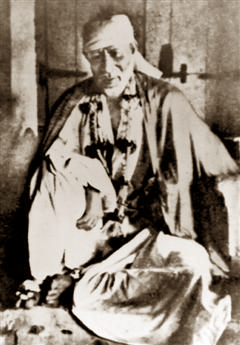
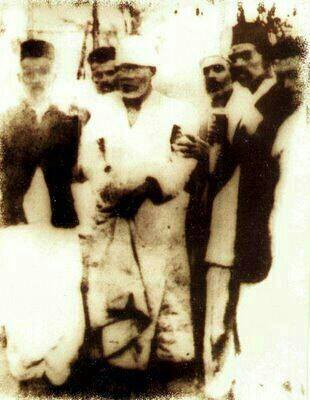
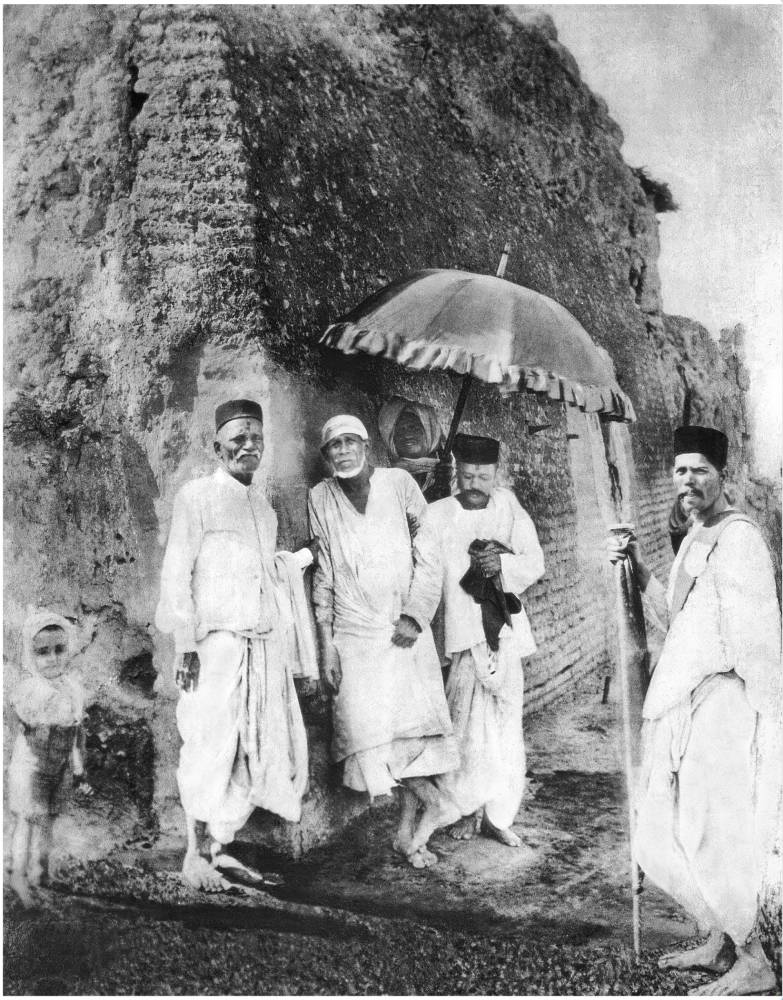
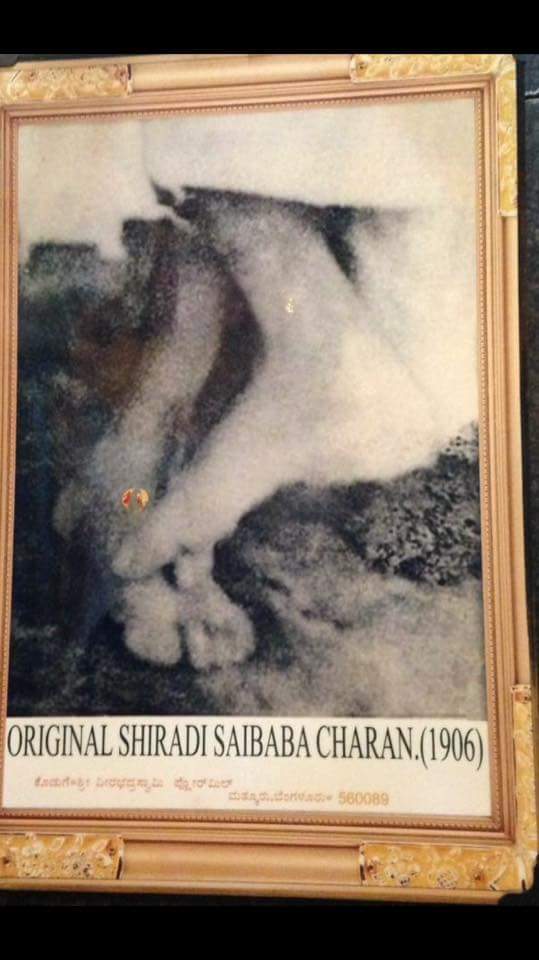

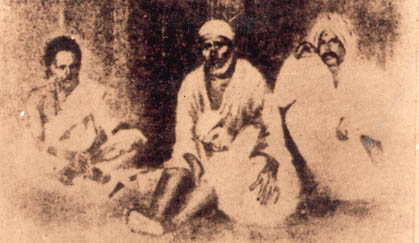
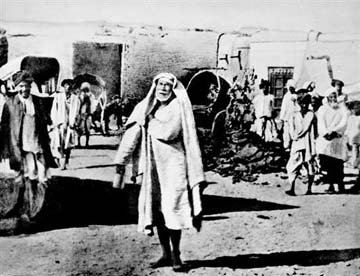

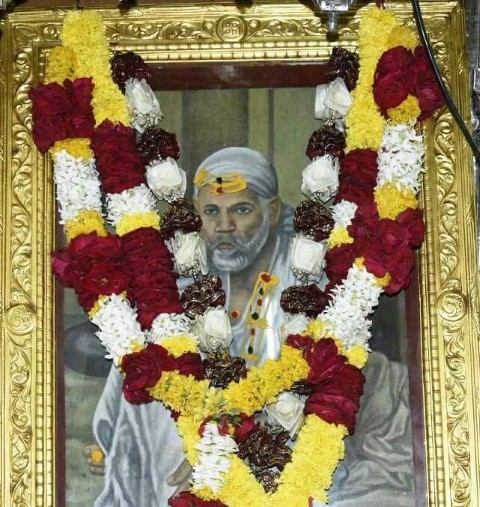

.jpg)
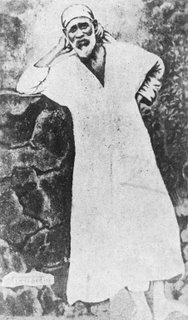
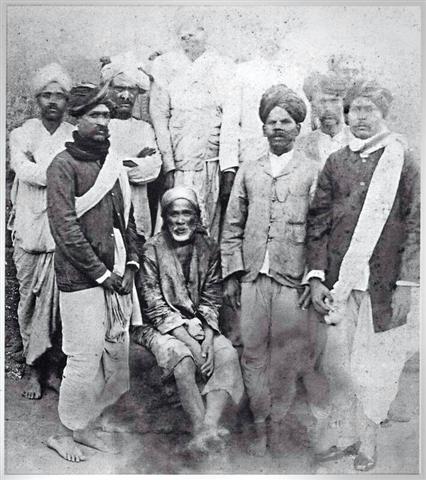
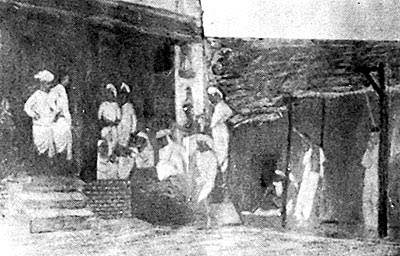
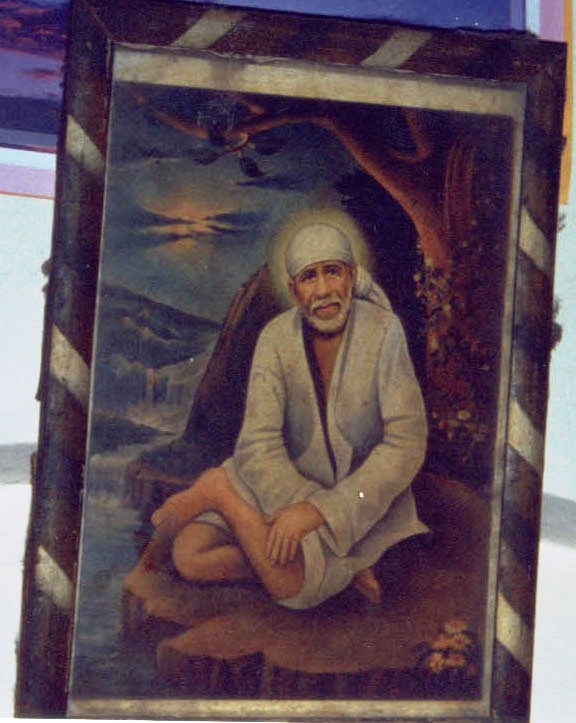

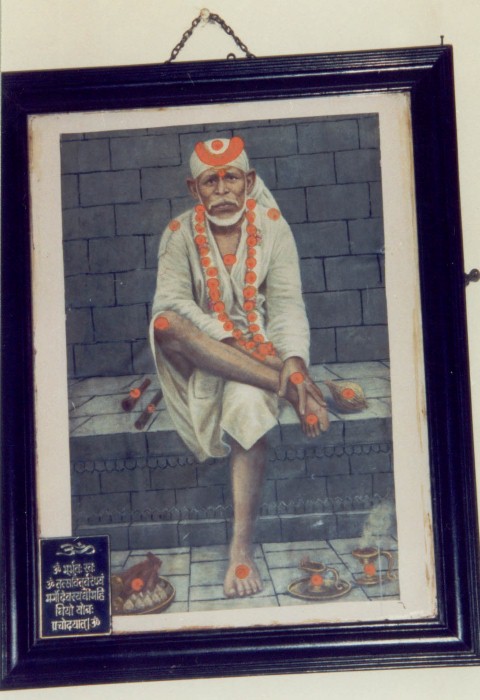

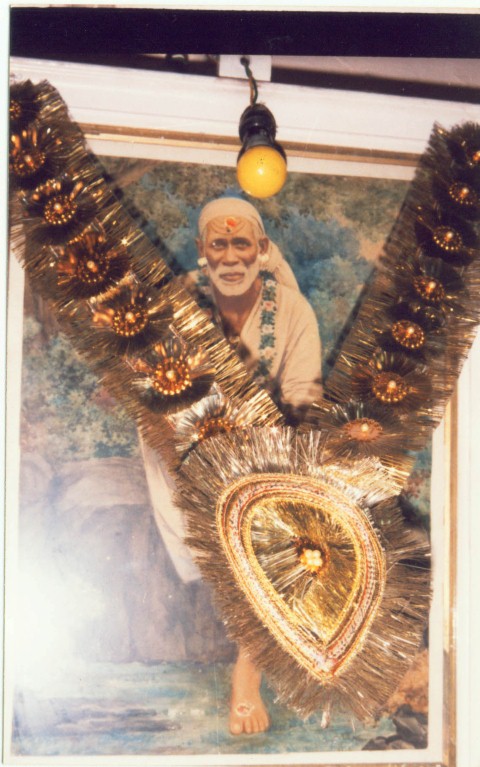
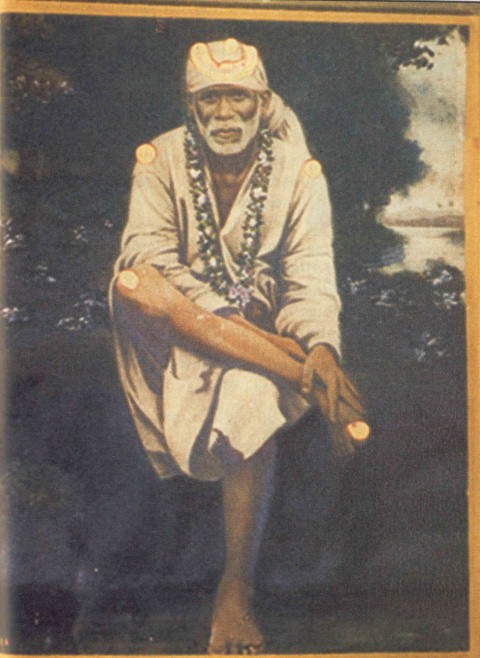
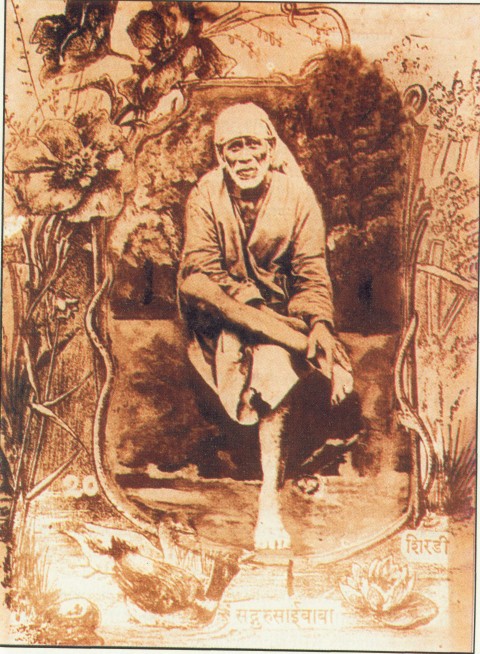
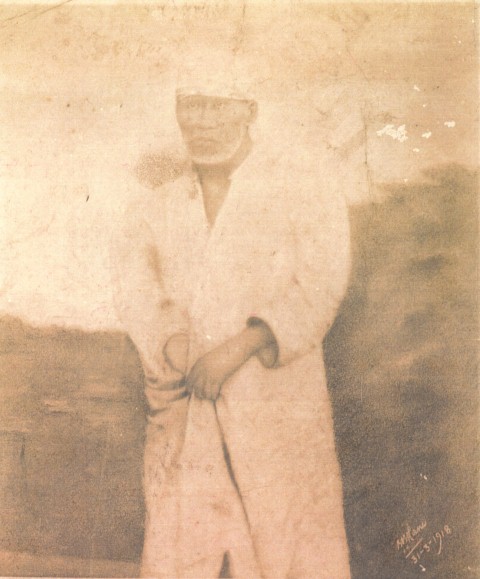
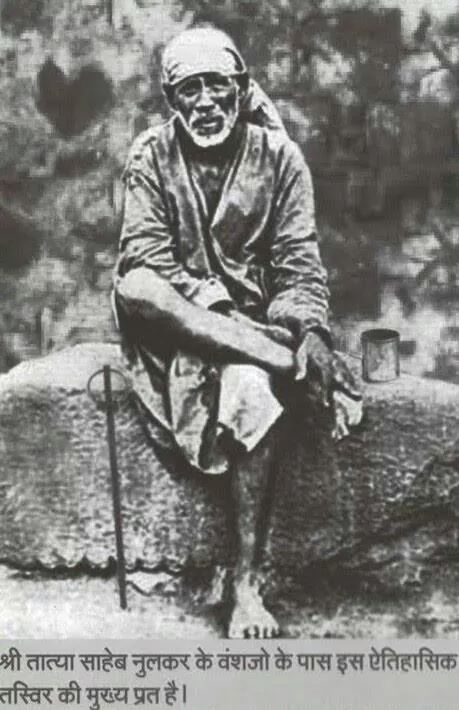
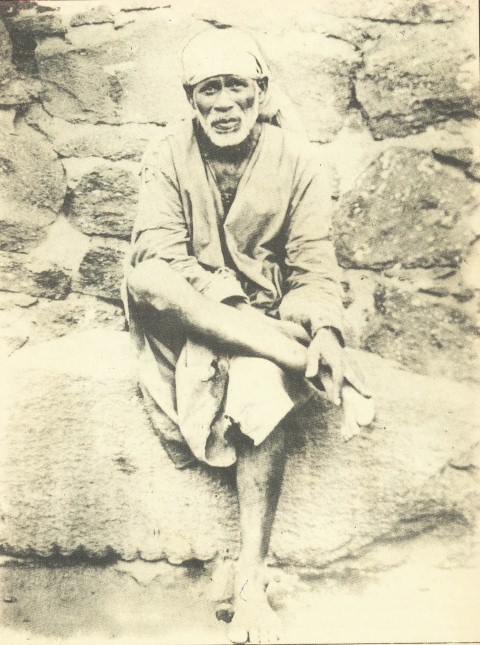
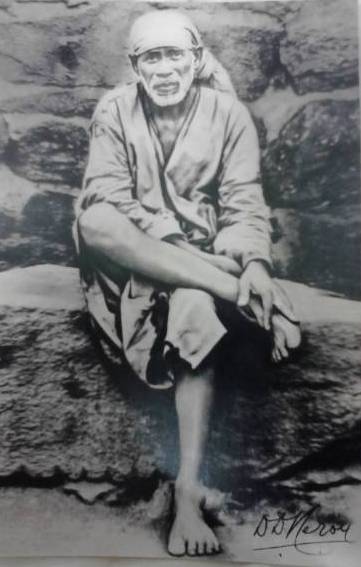

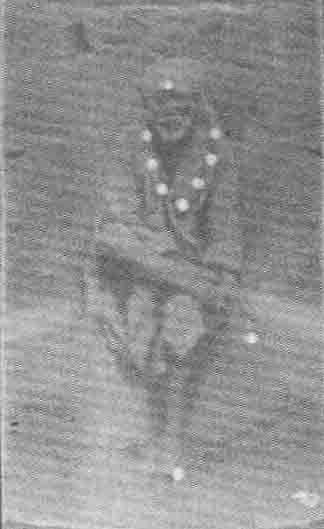
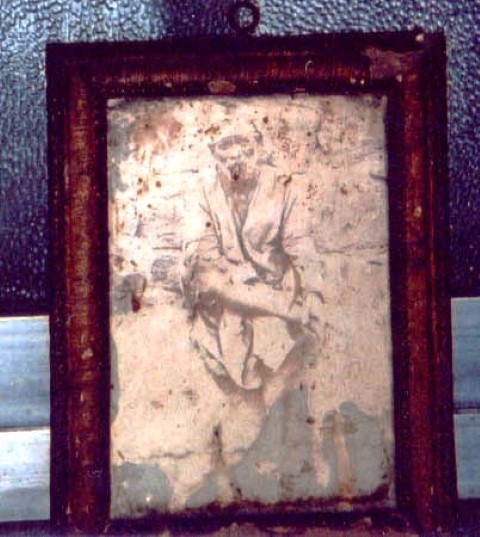
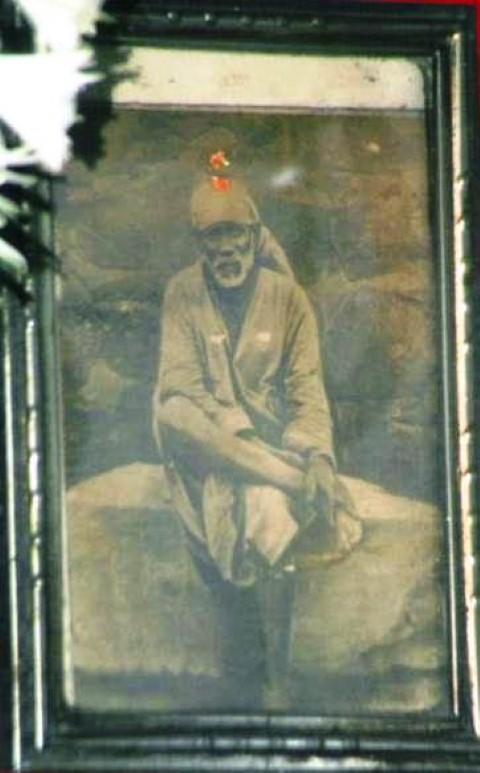
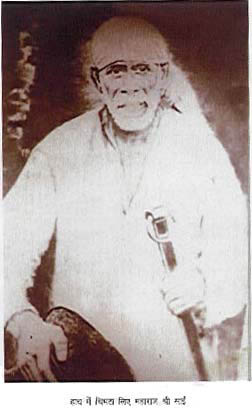

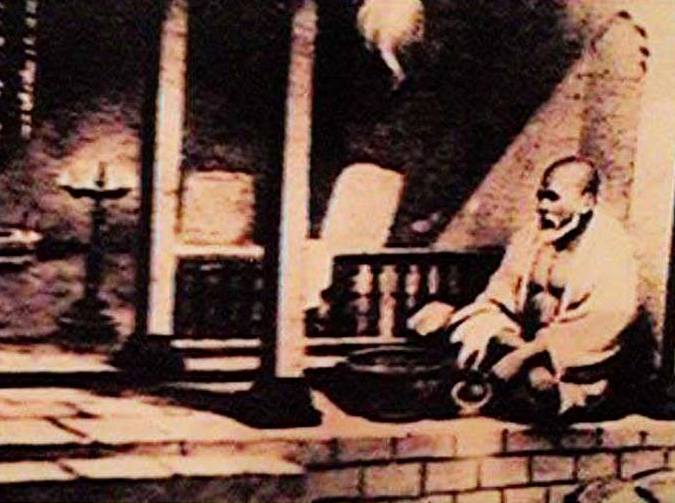
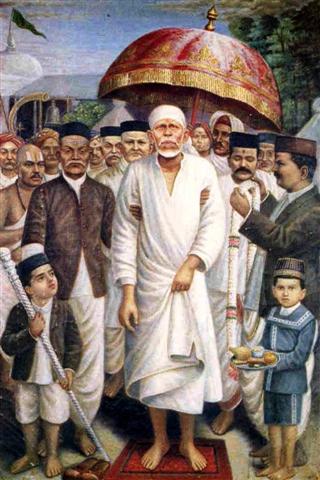
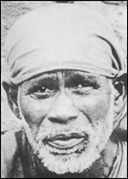
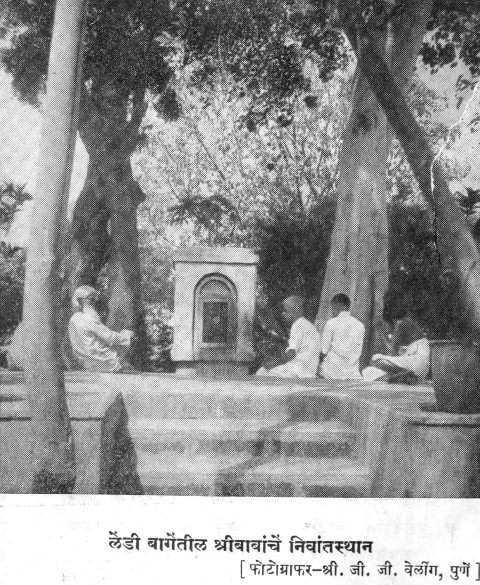
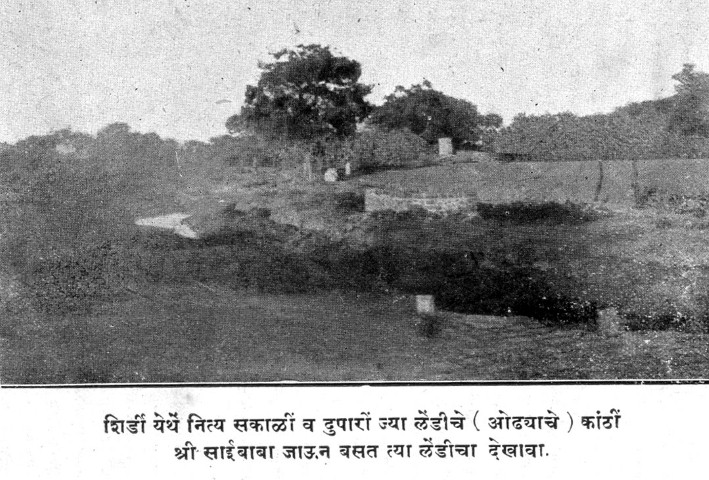
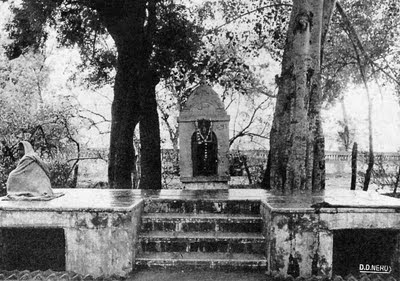
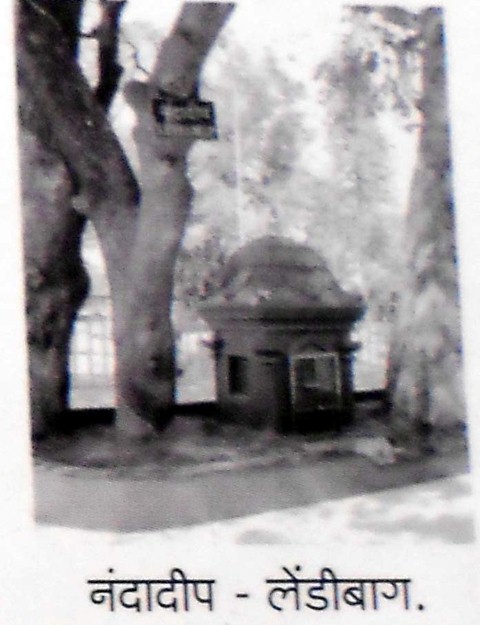

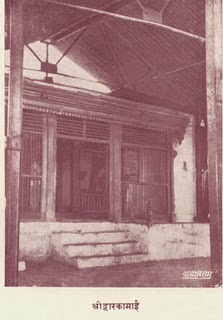
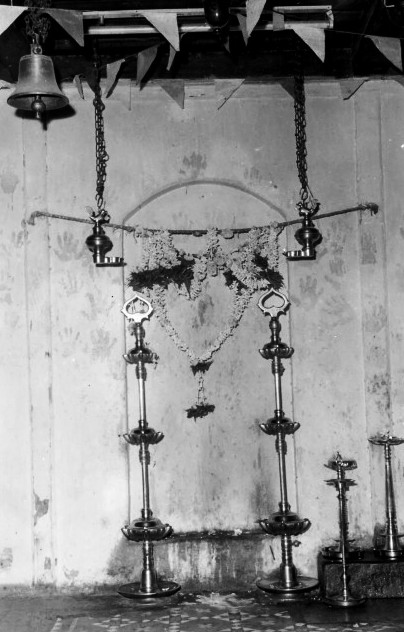
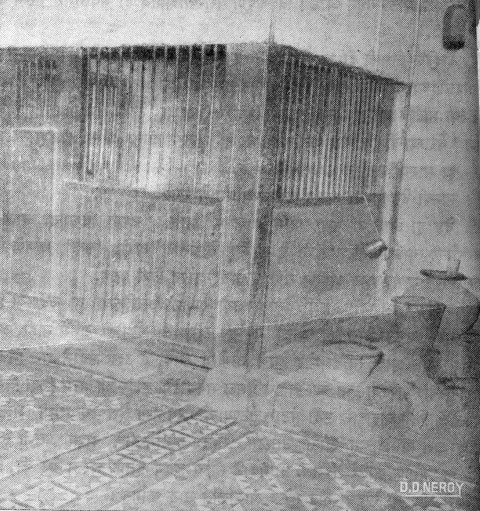
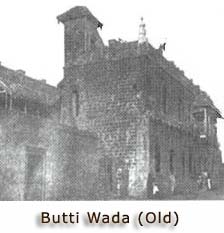
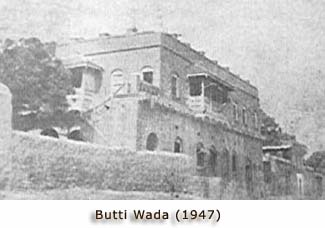
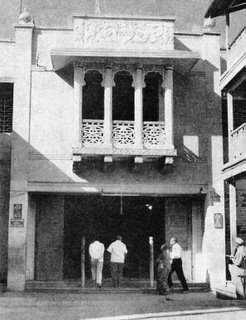
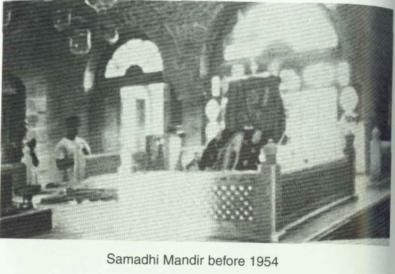
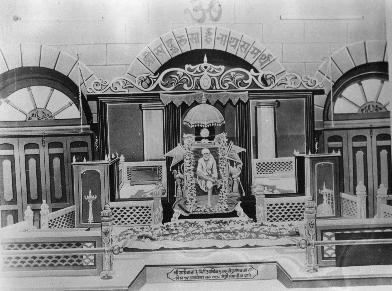
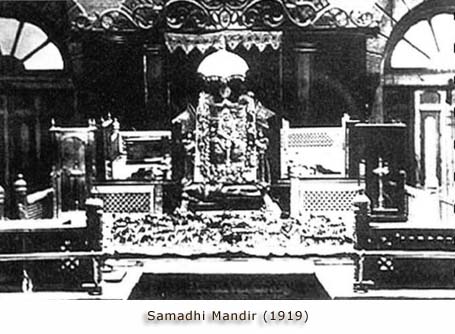
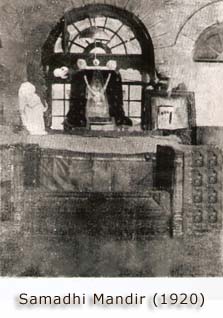
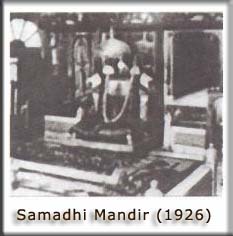
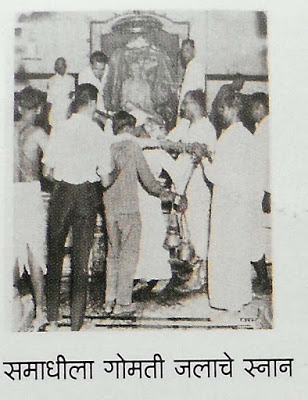
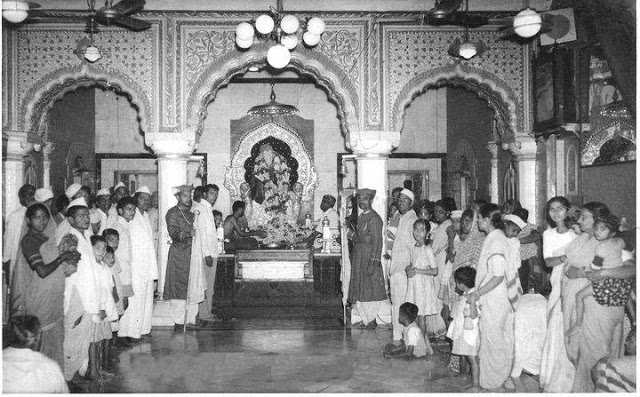
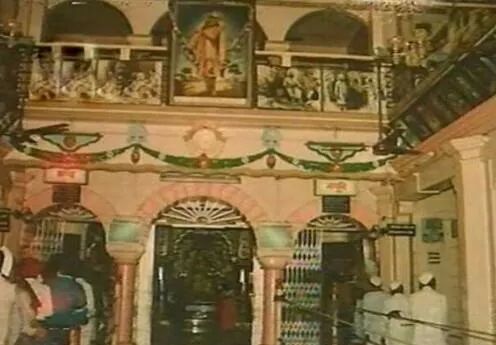
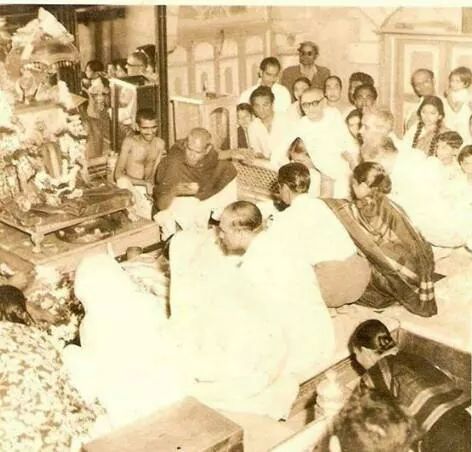

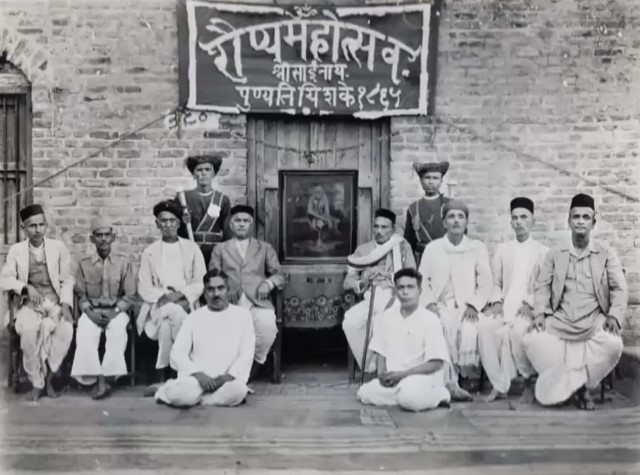
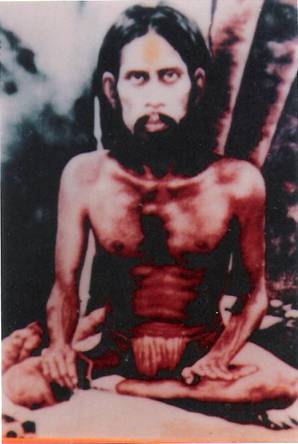
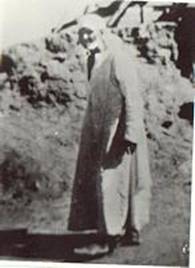
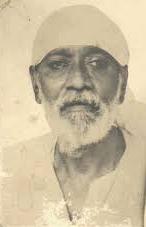
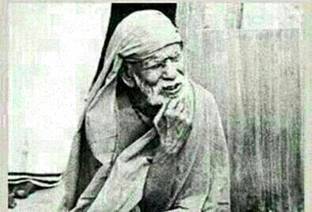

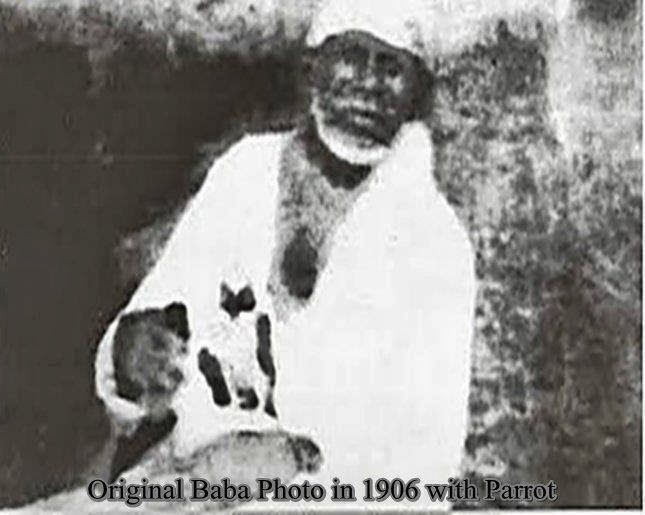
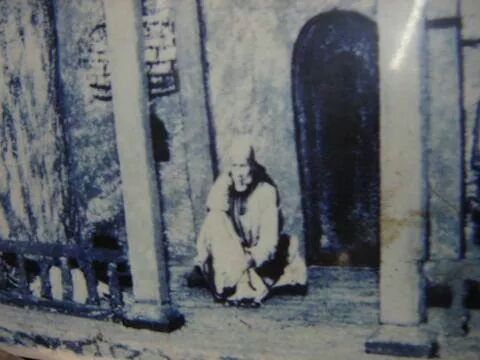
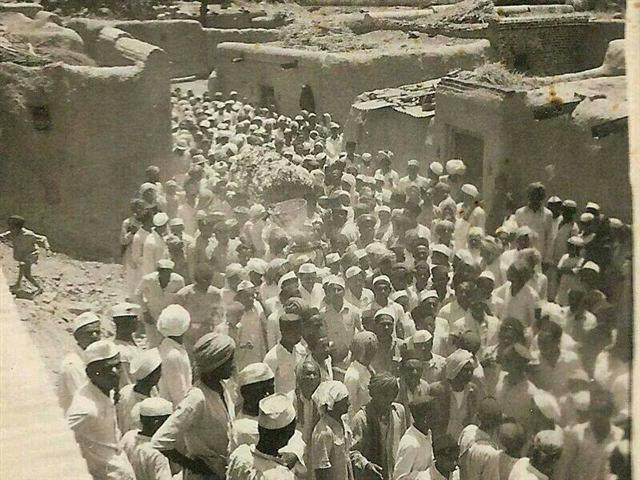
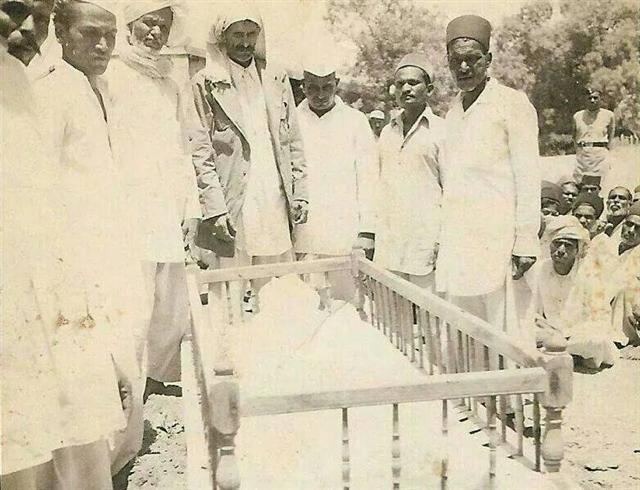
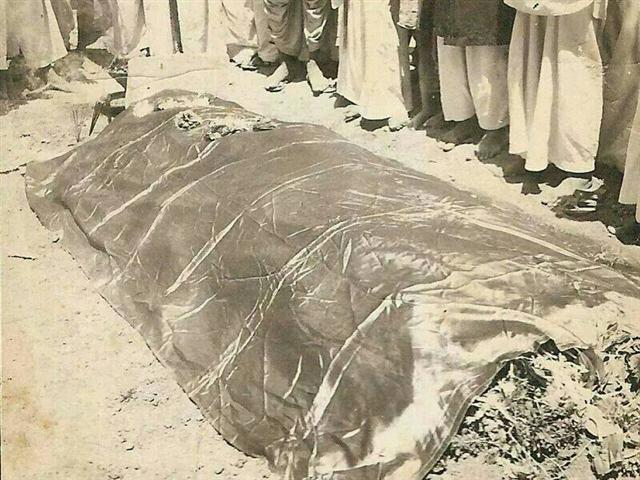
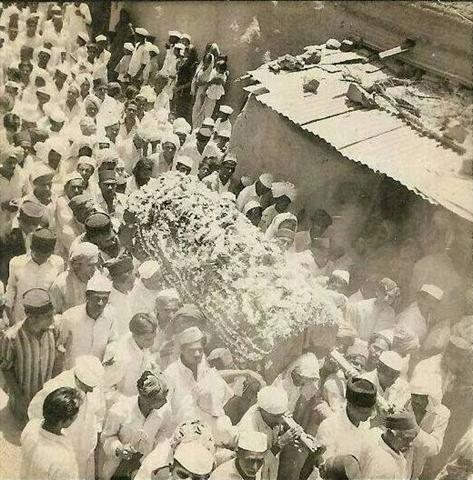
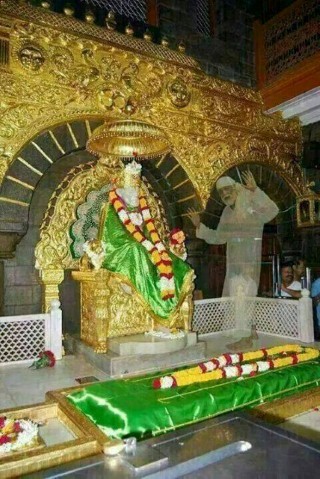
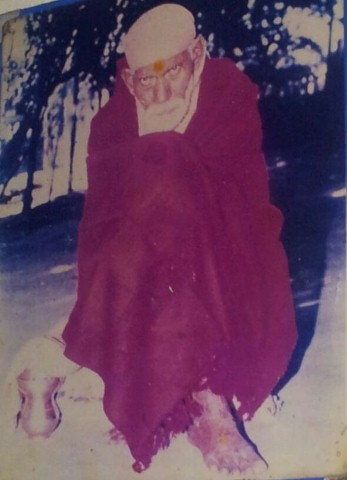
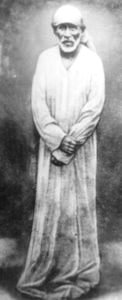
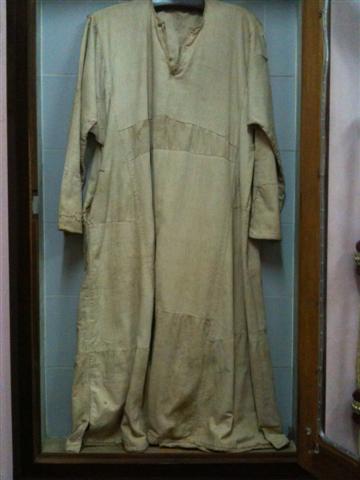
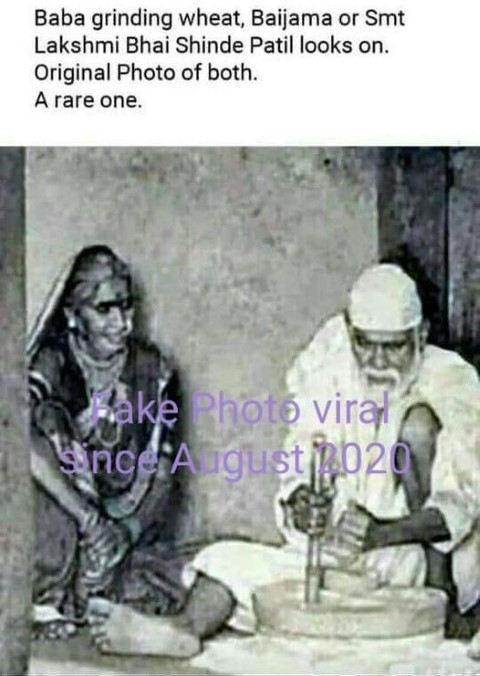
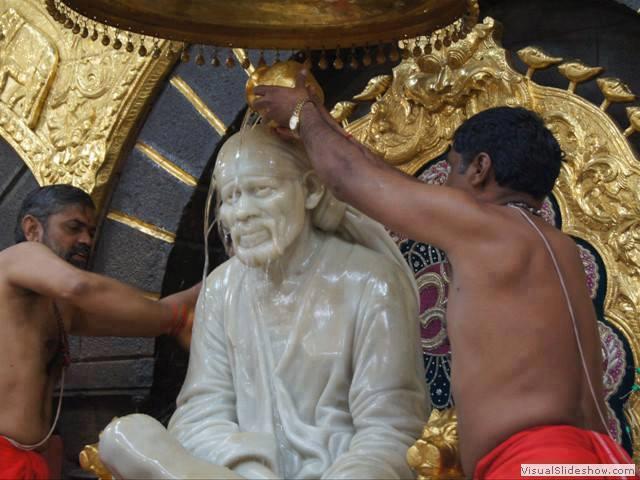
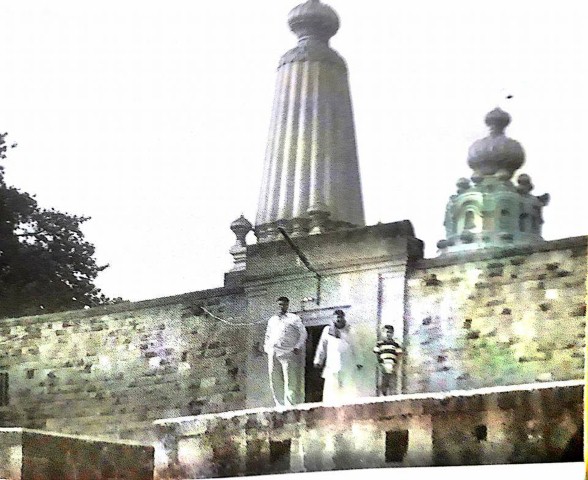

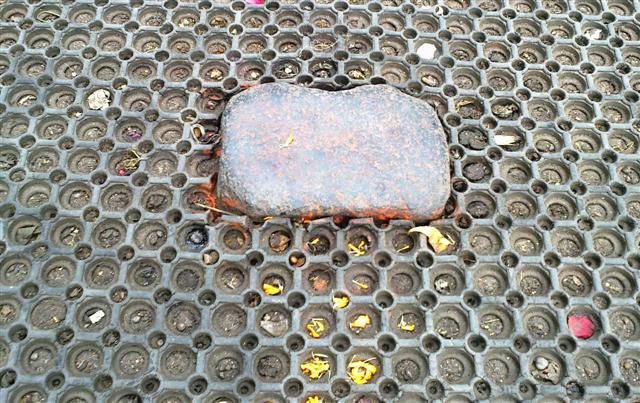
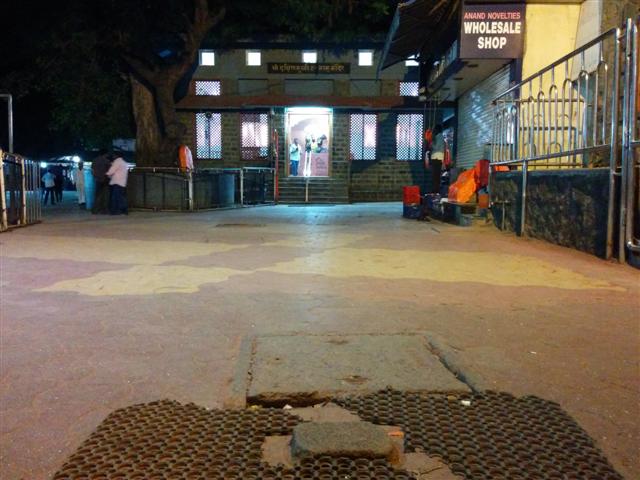
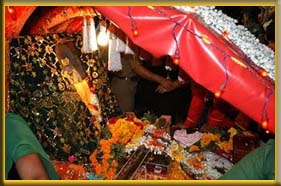
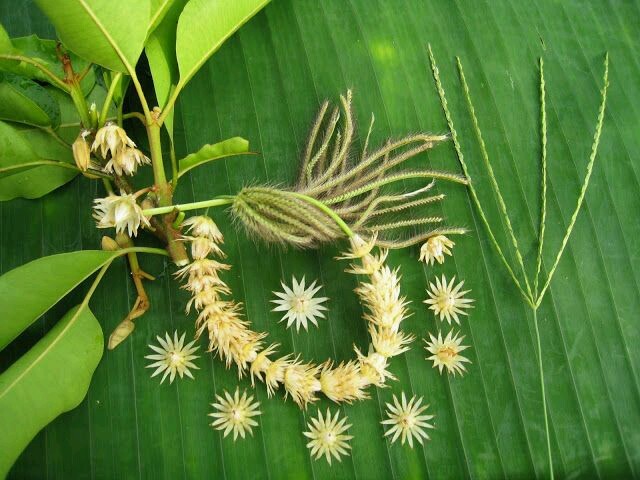
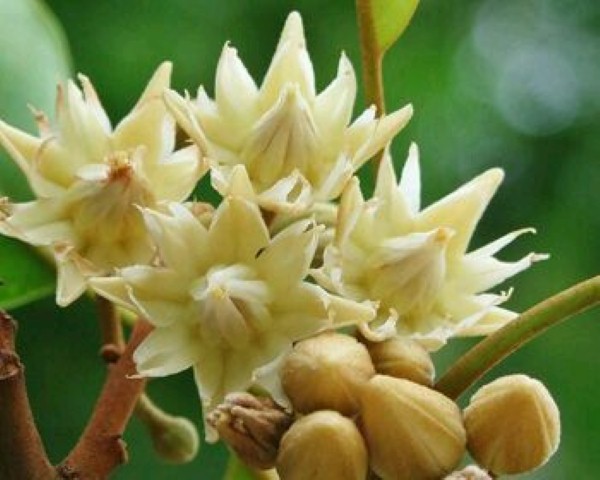
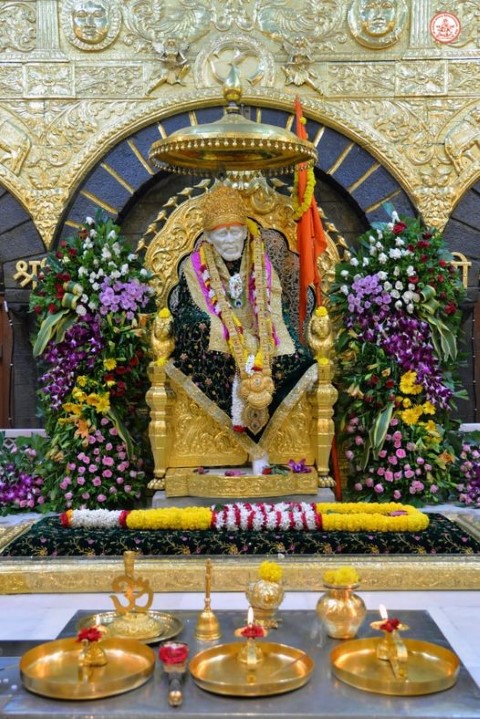


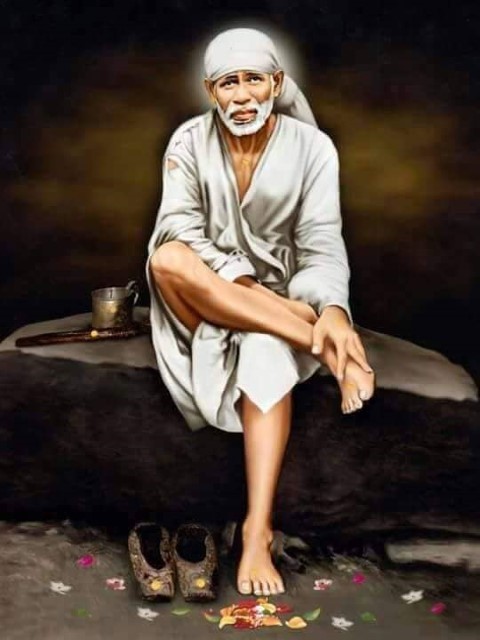

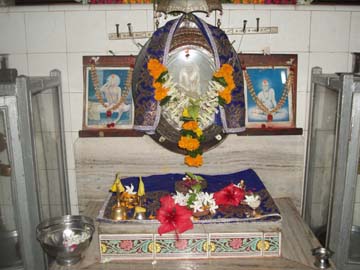
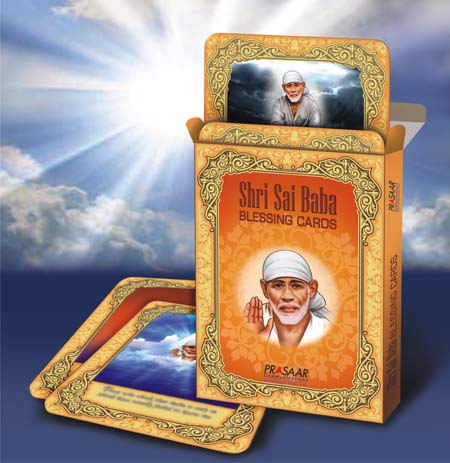
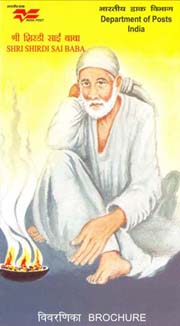
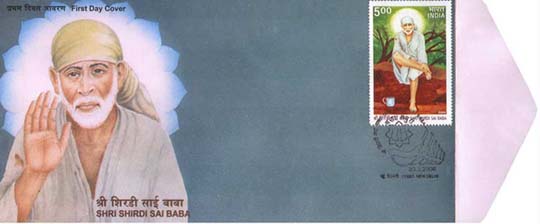
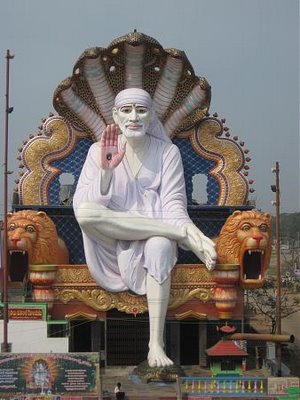
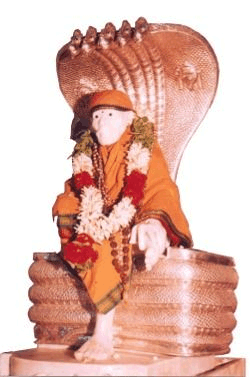
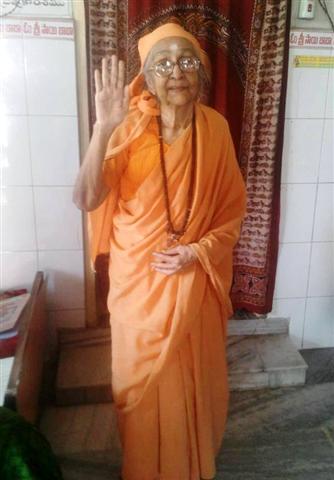
.jpeg)
.jpeg)
.jpeg)